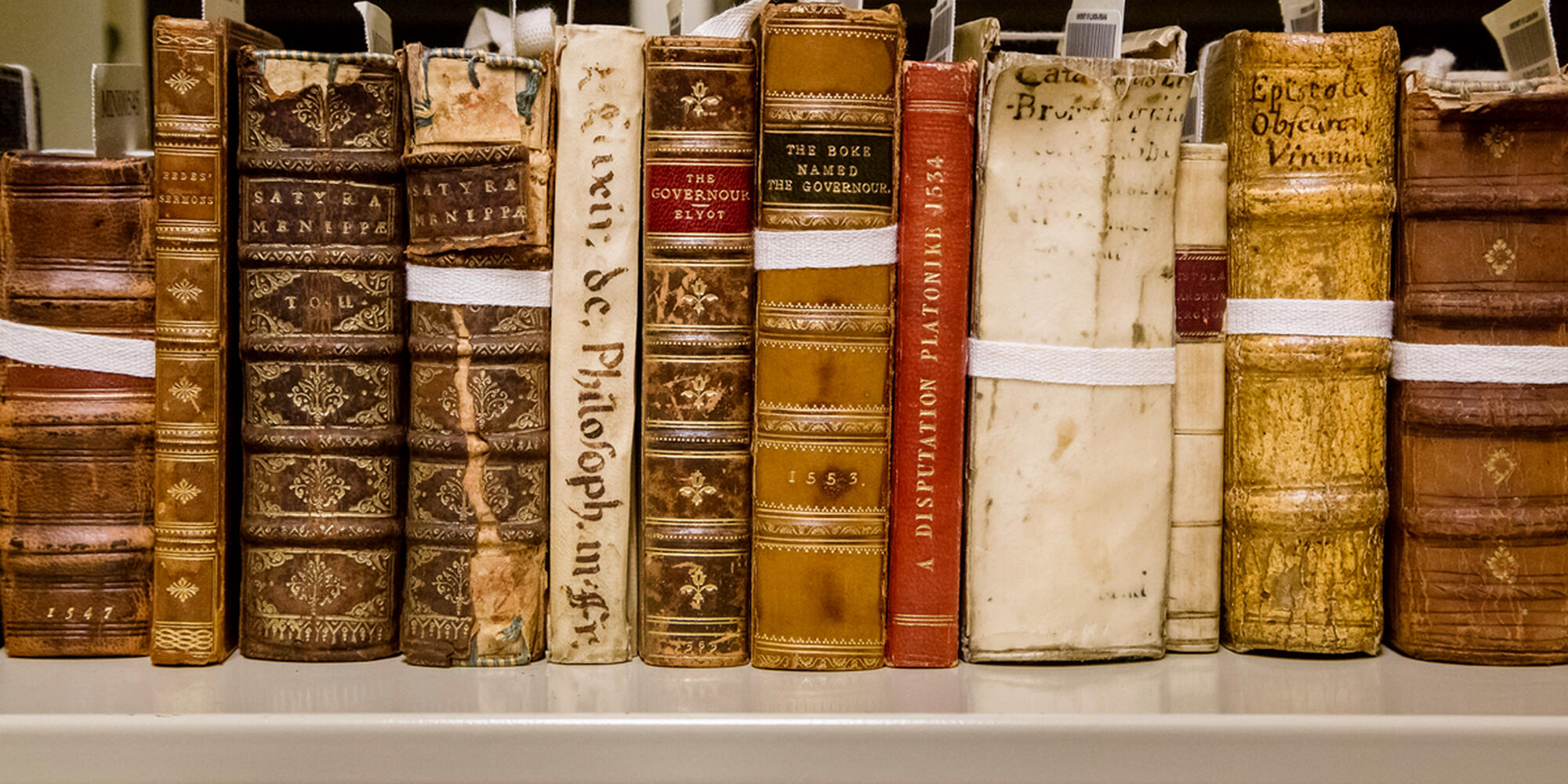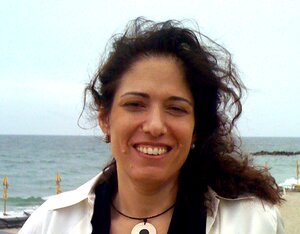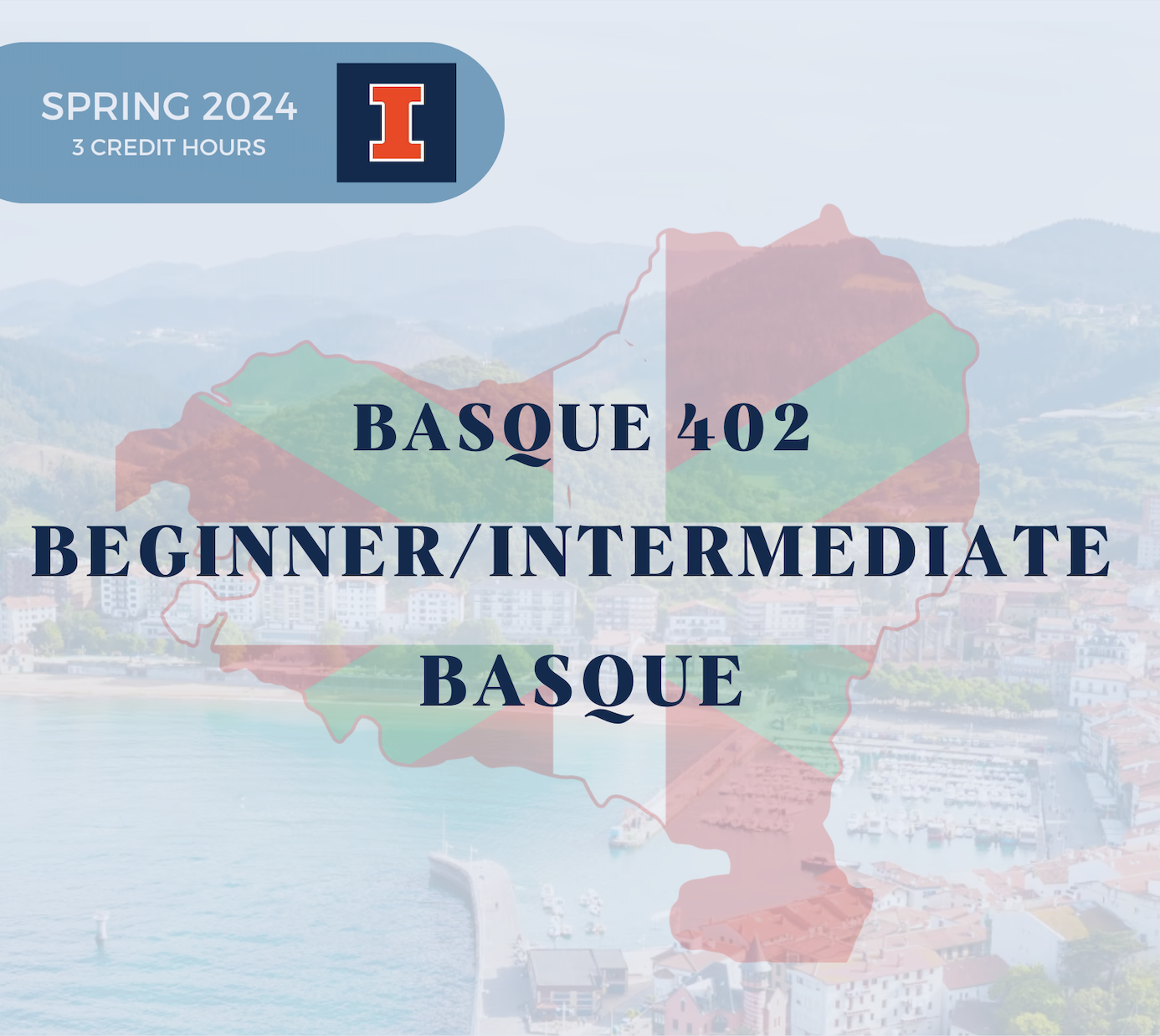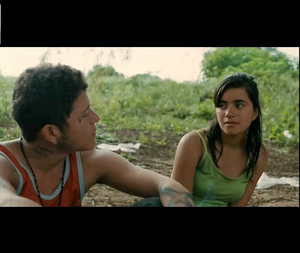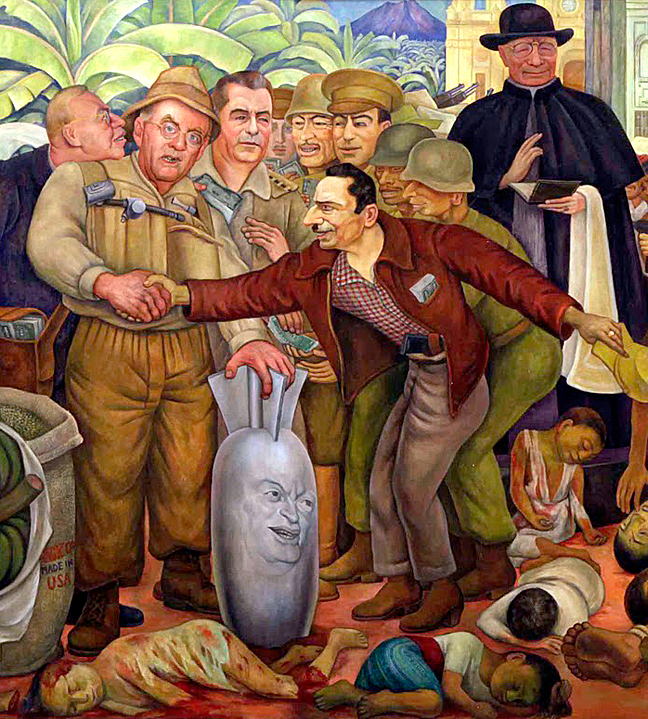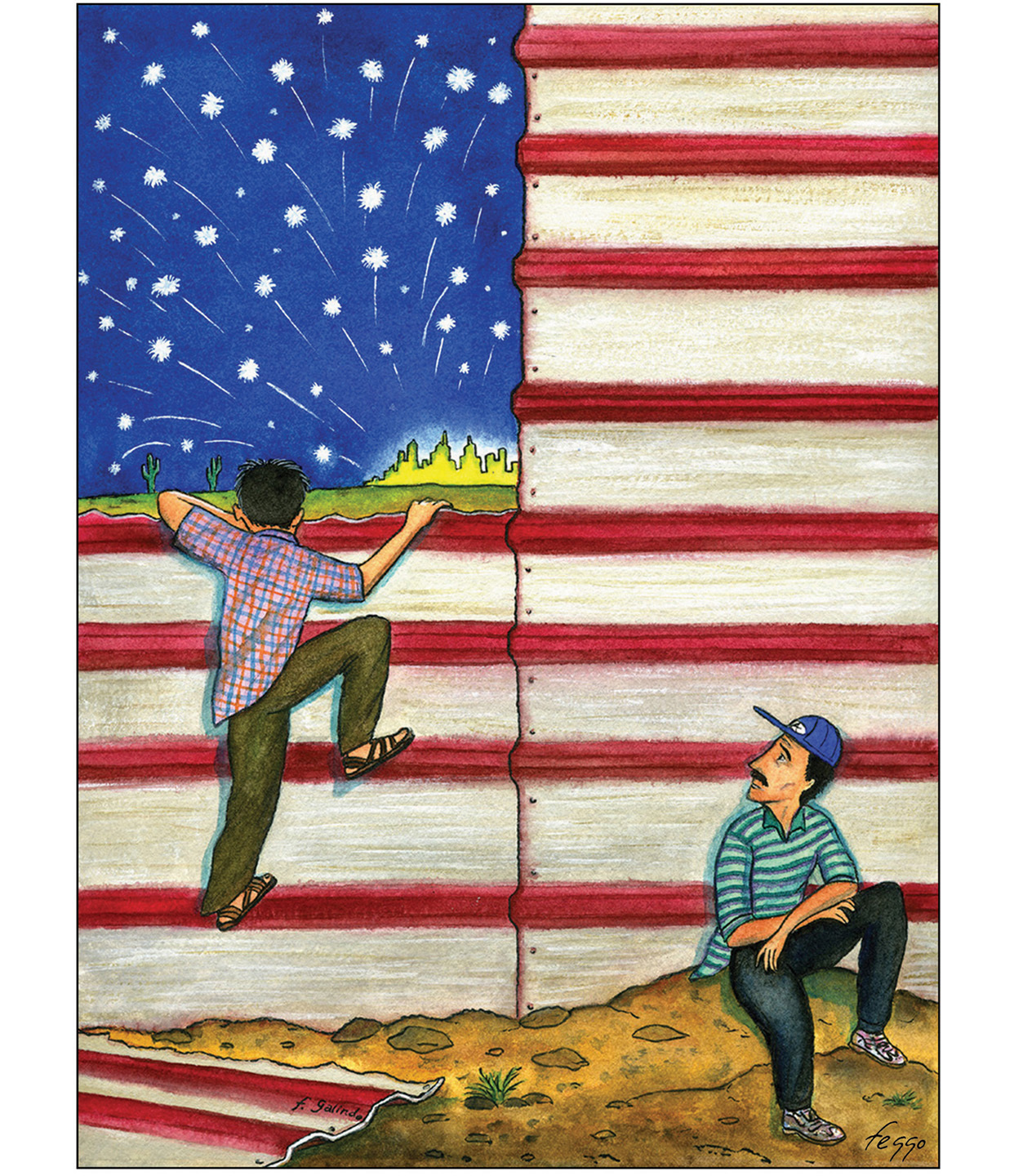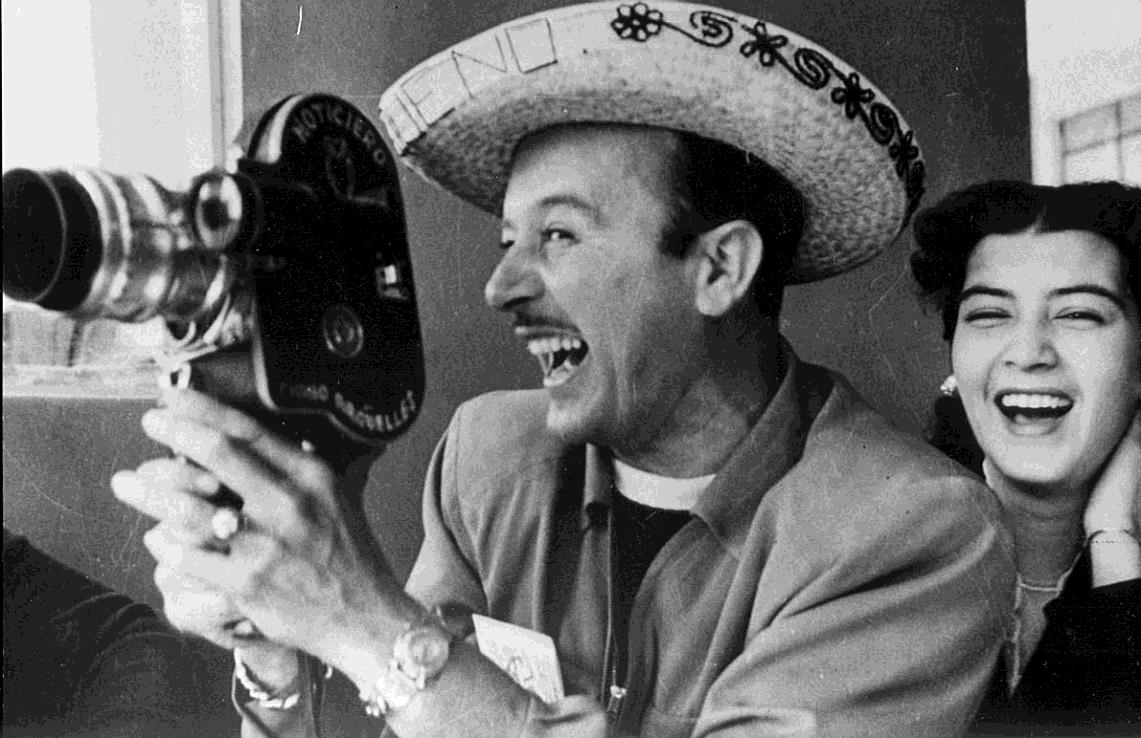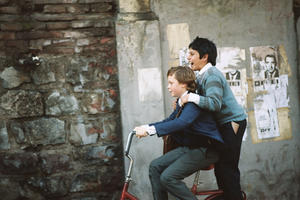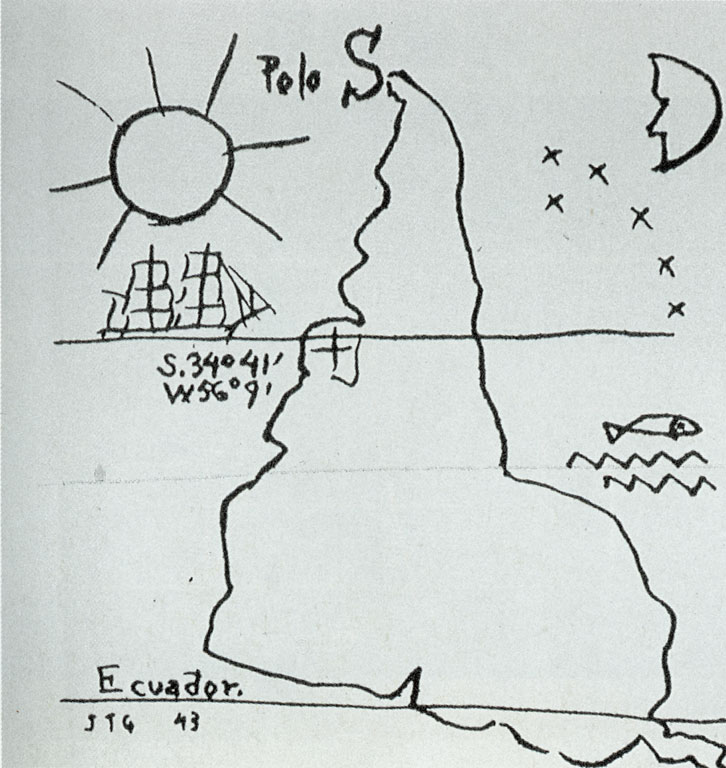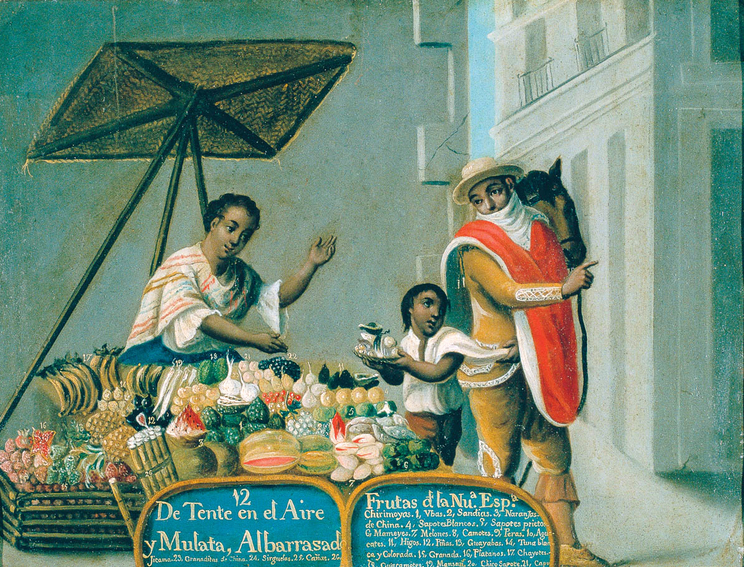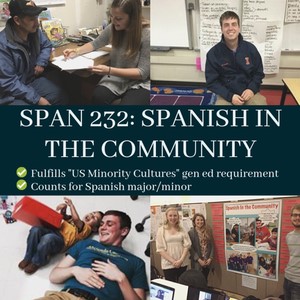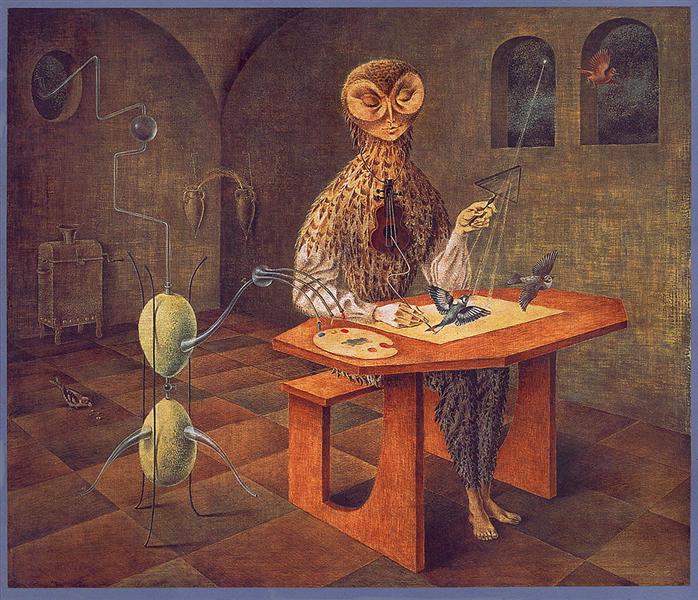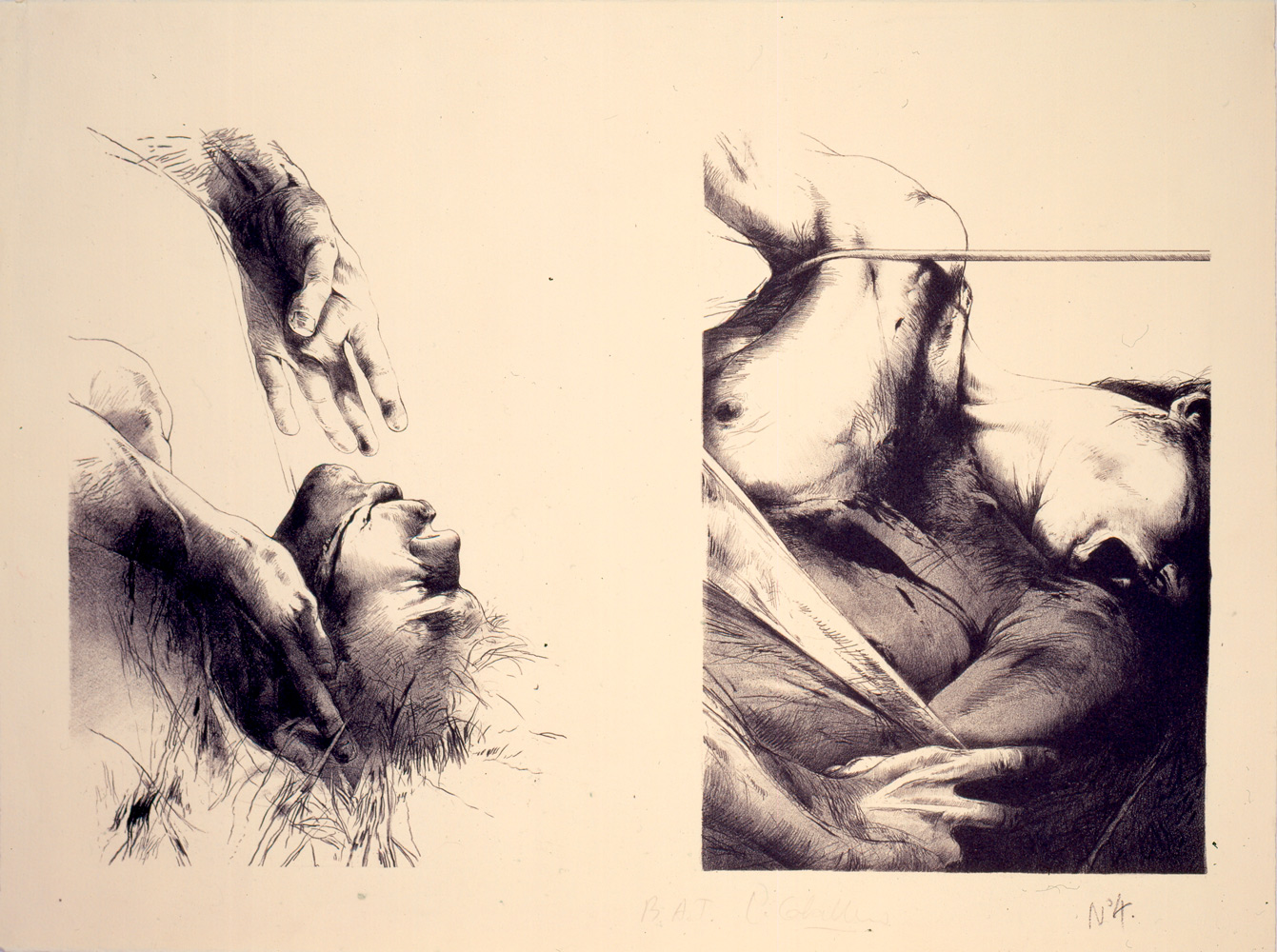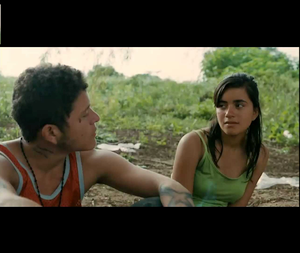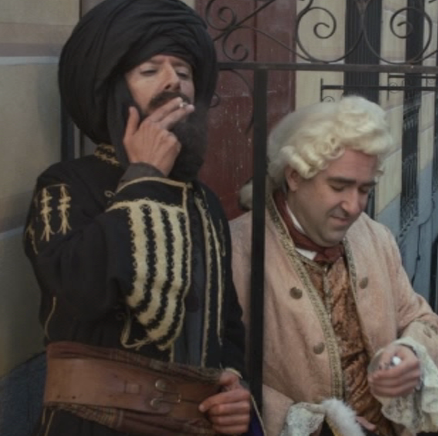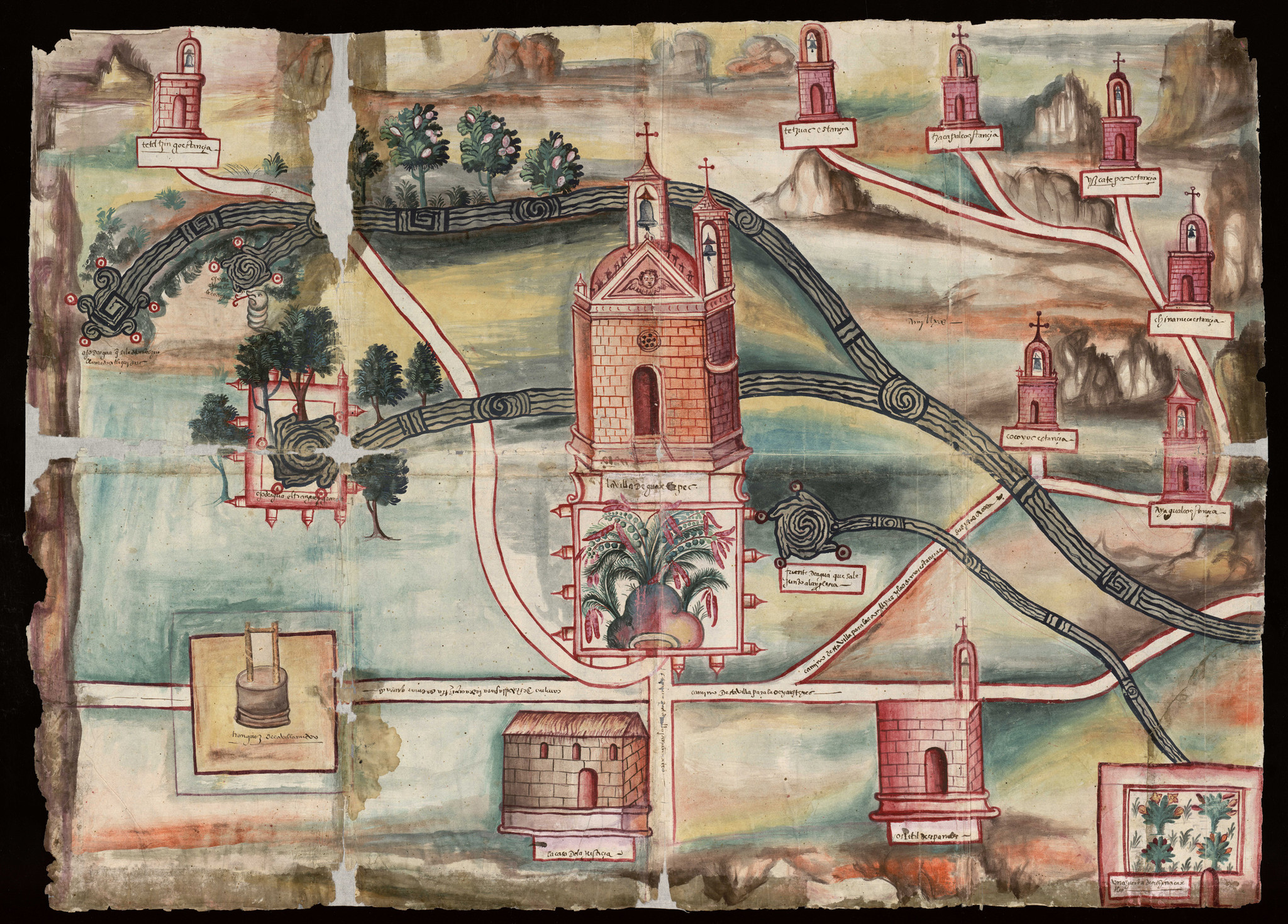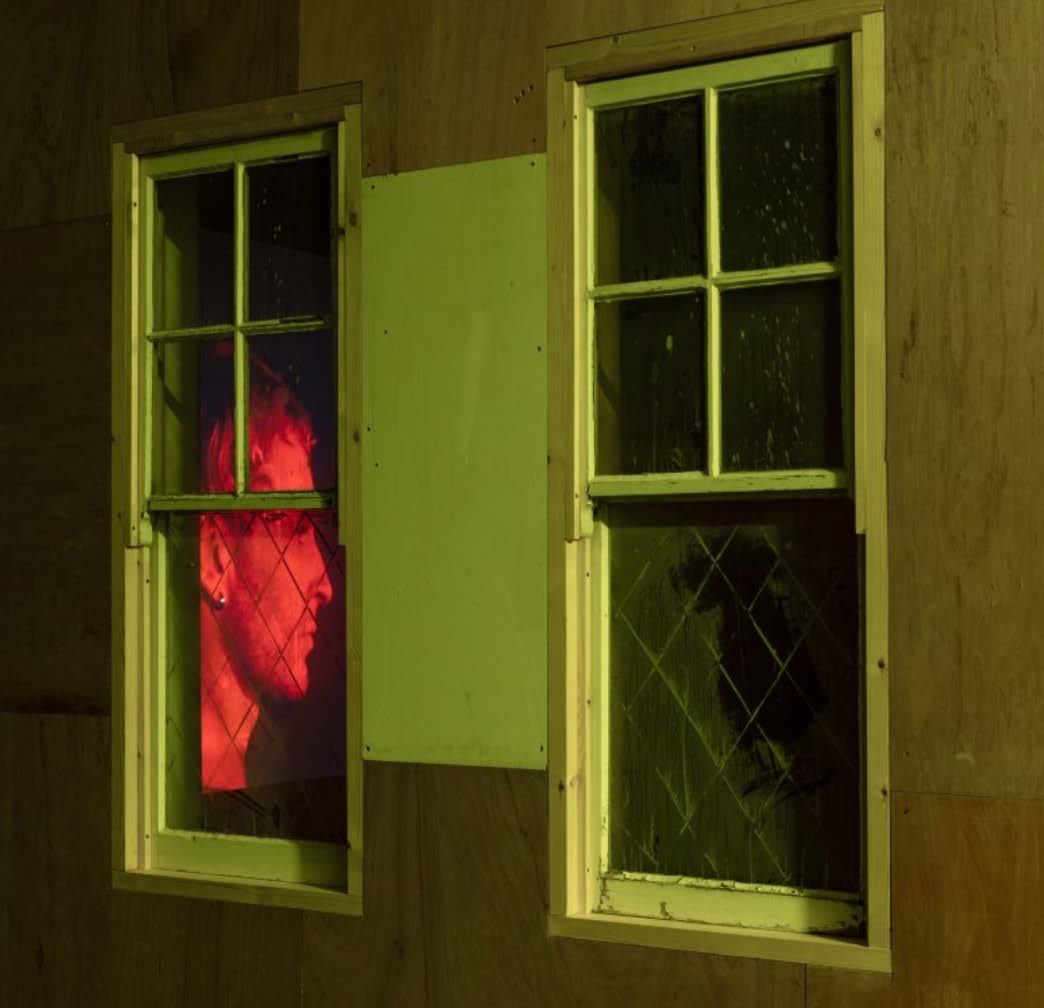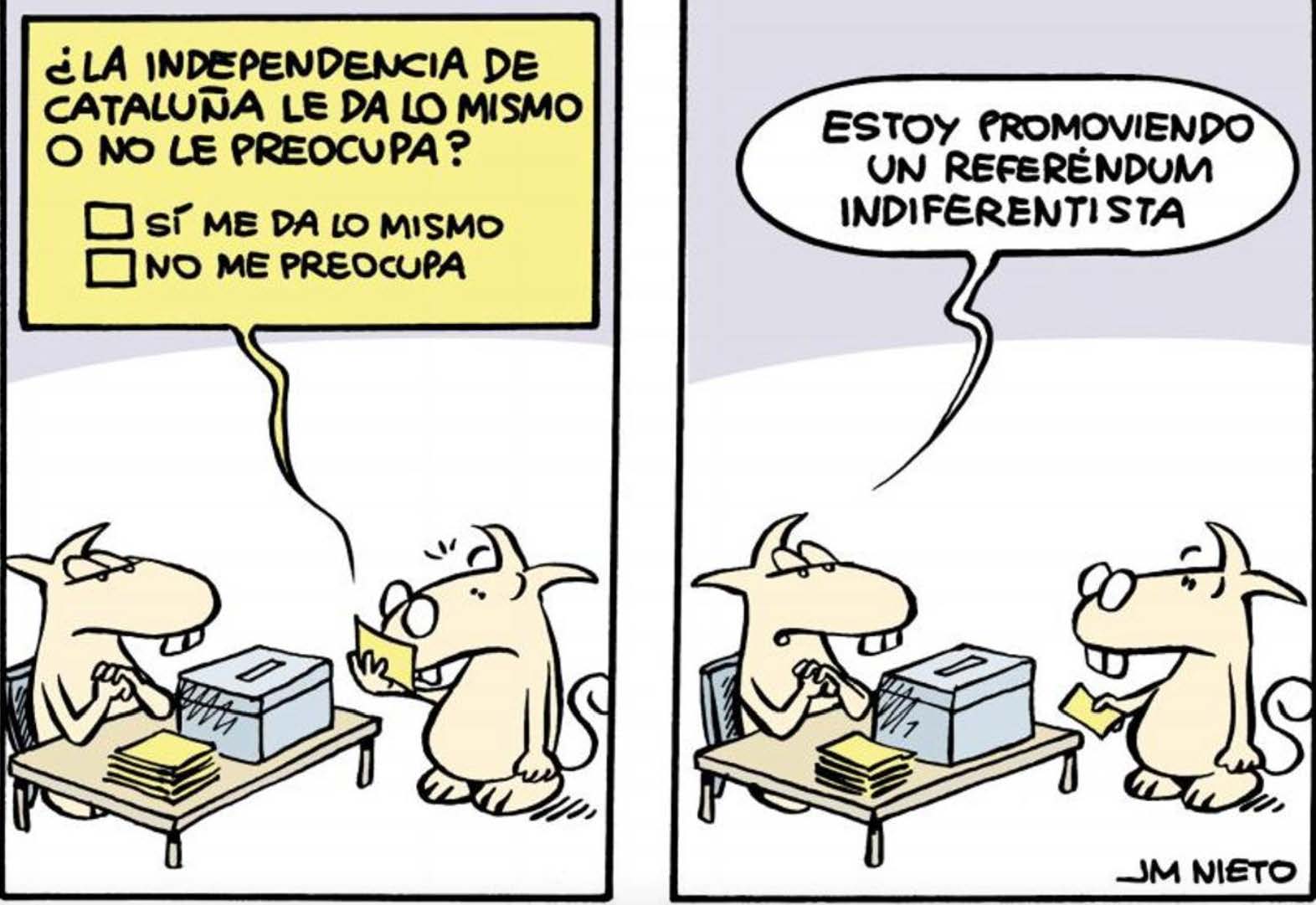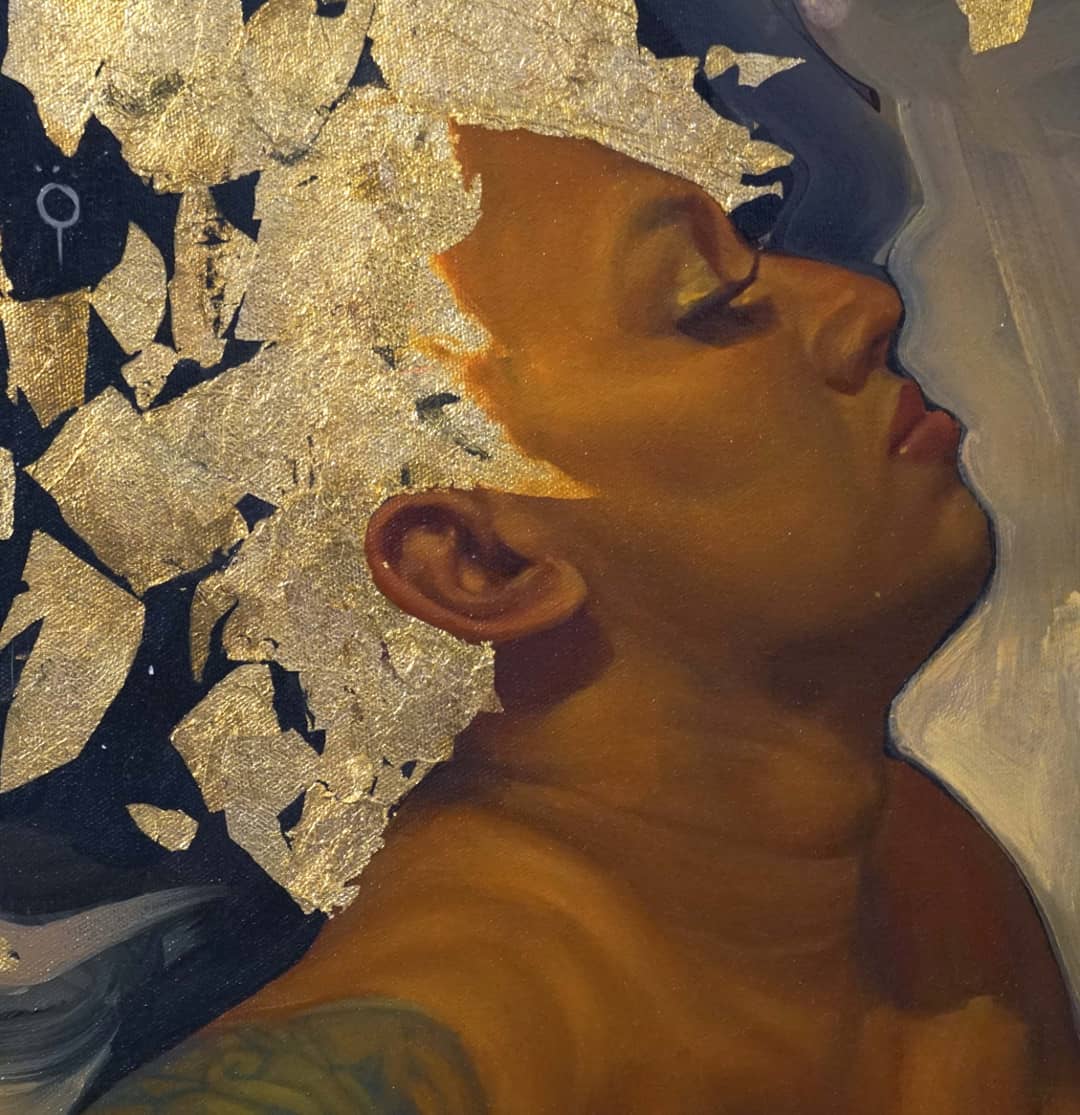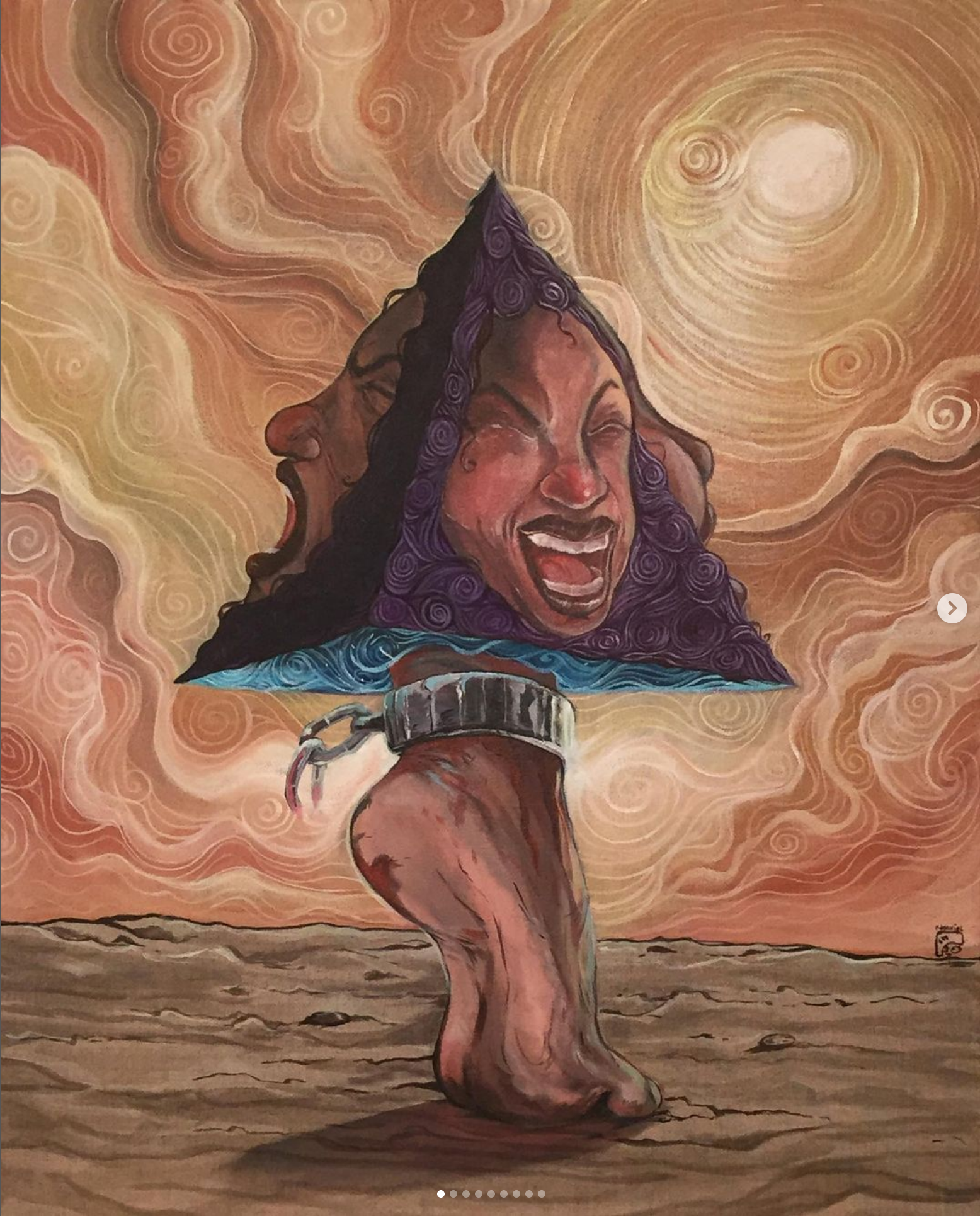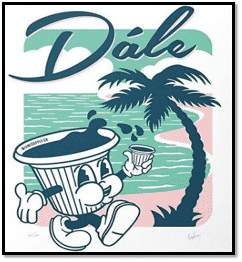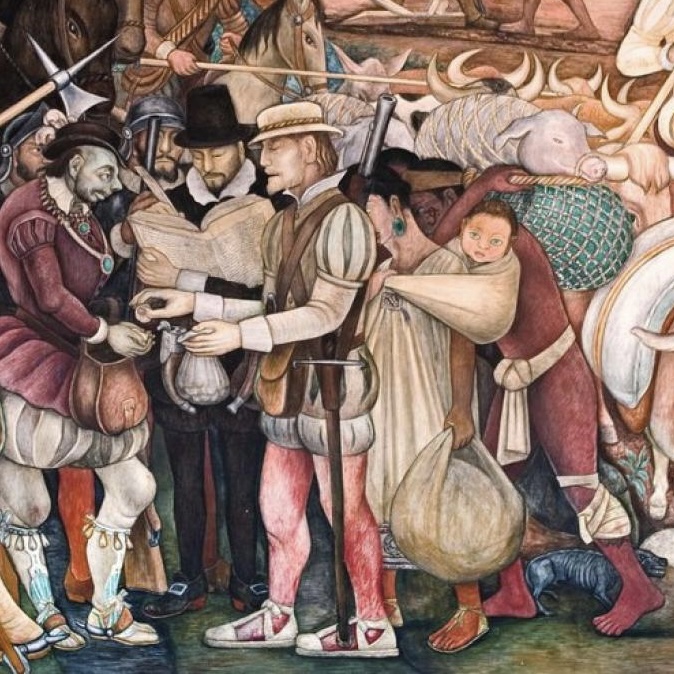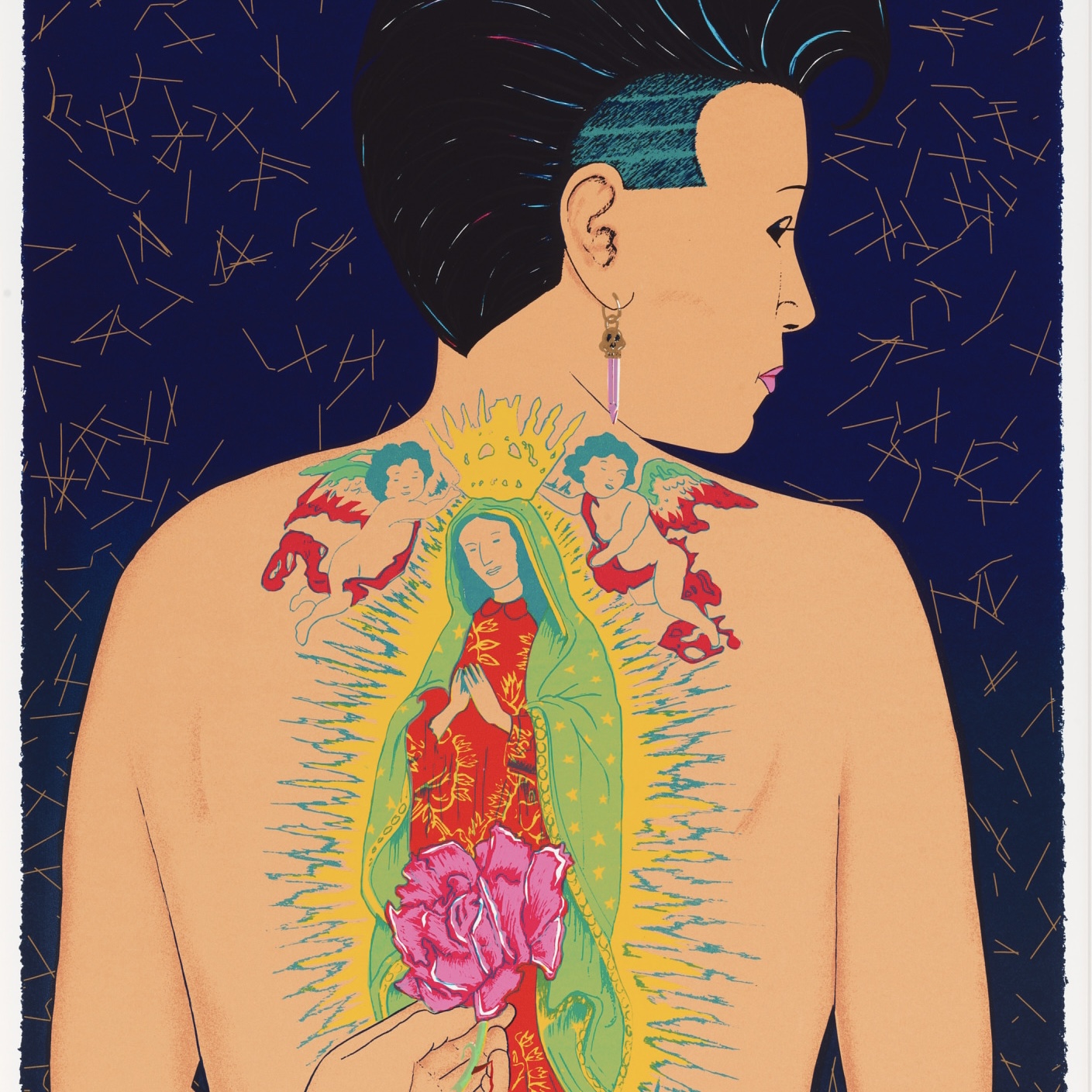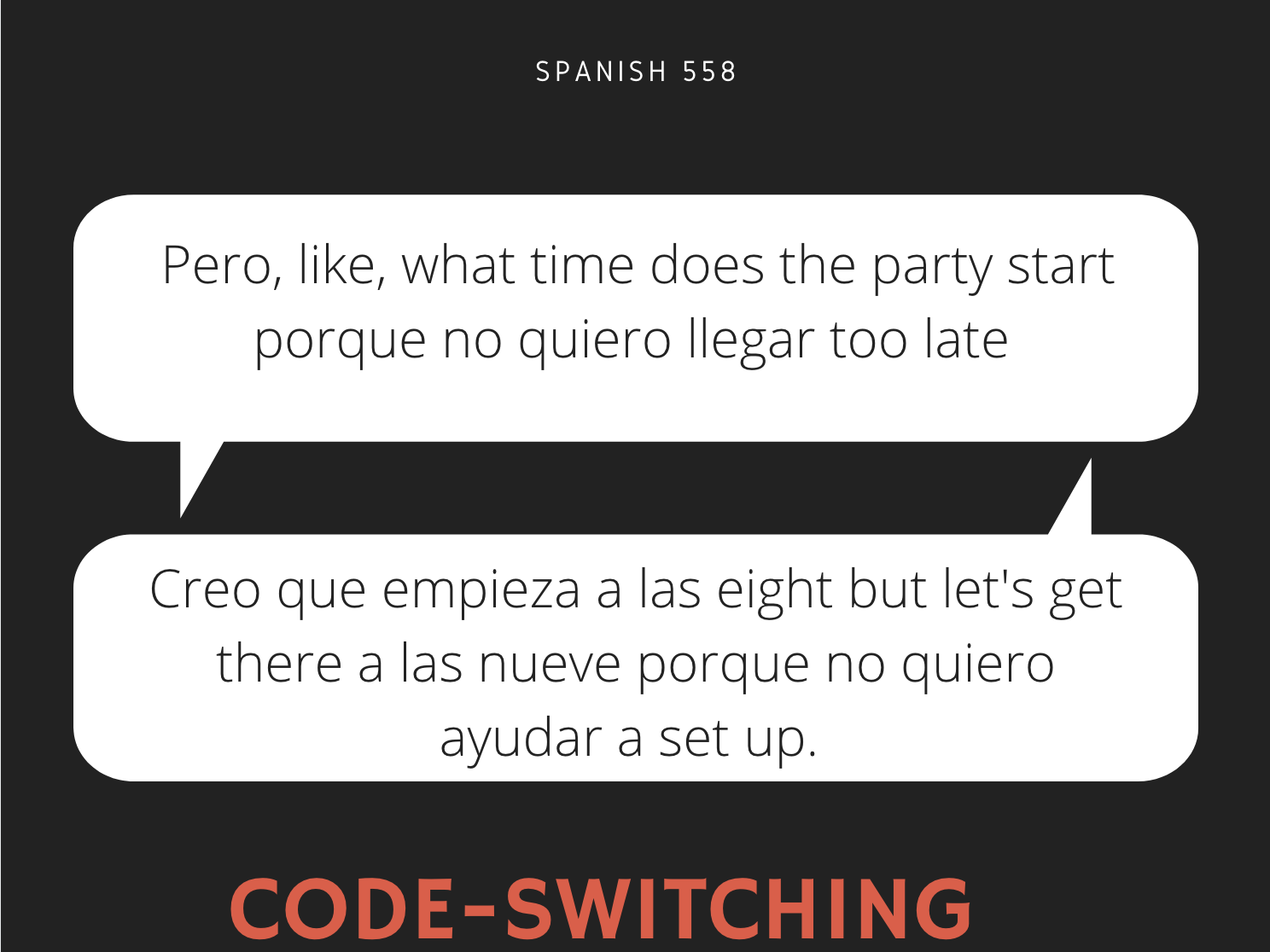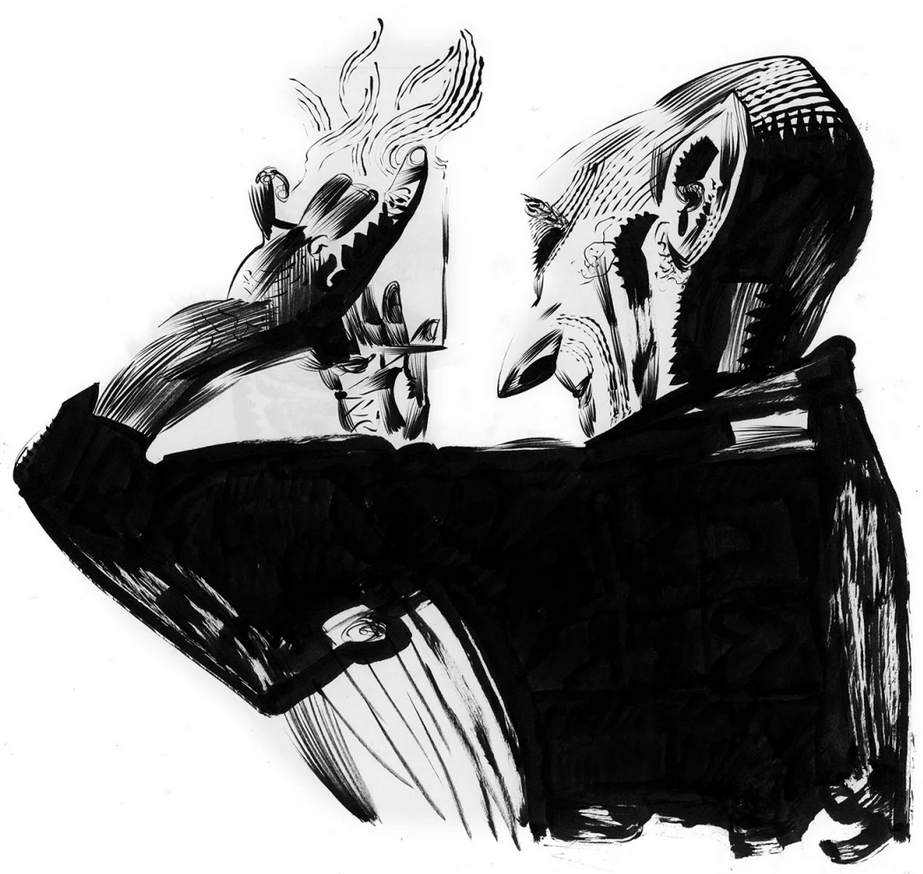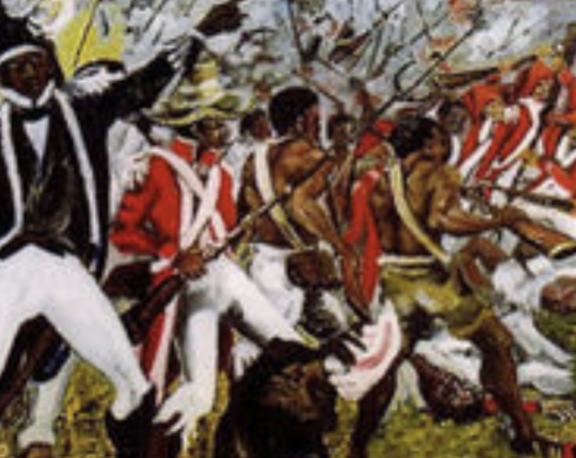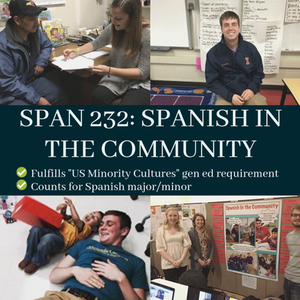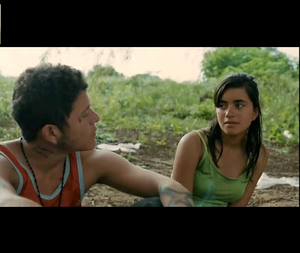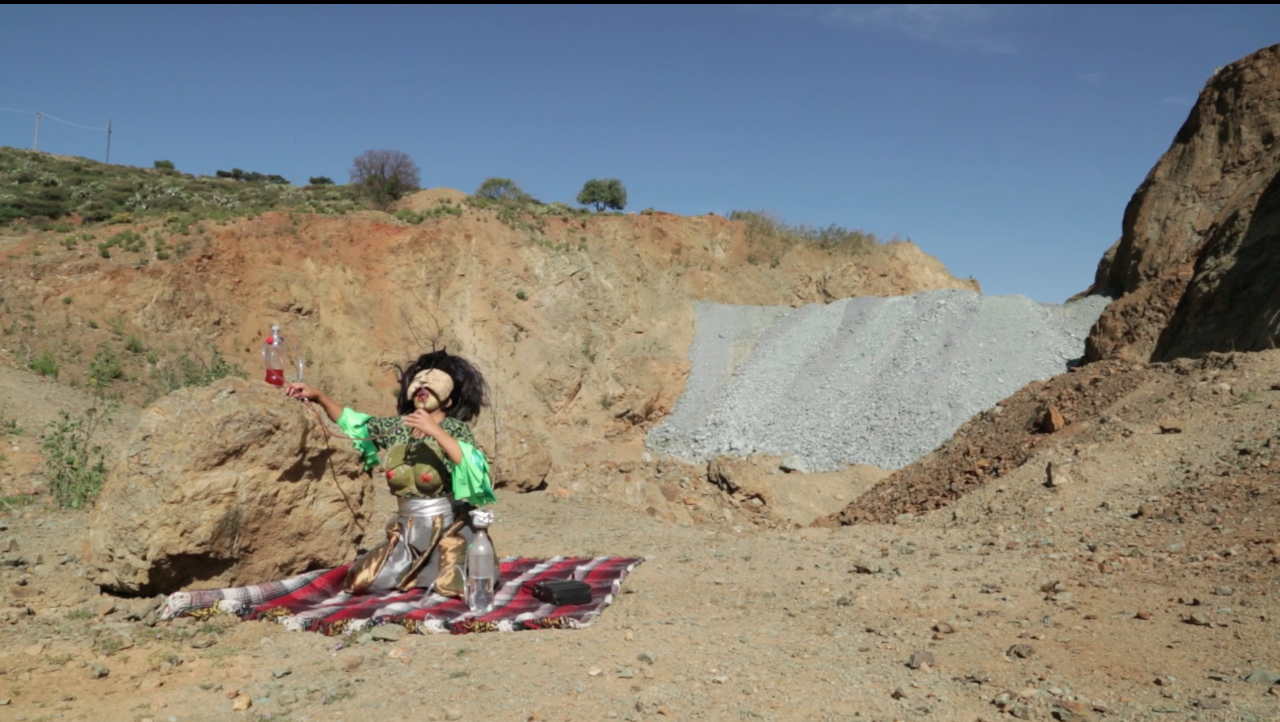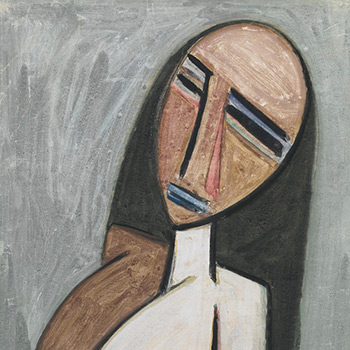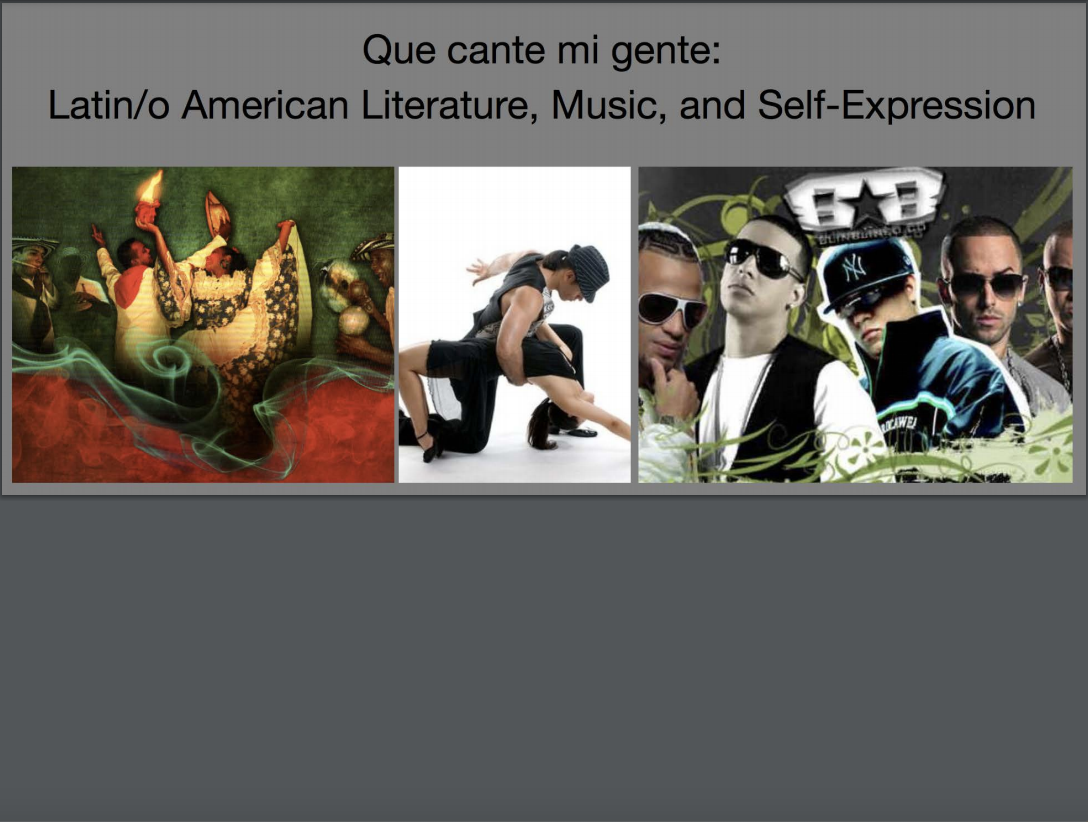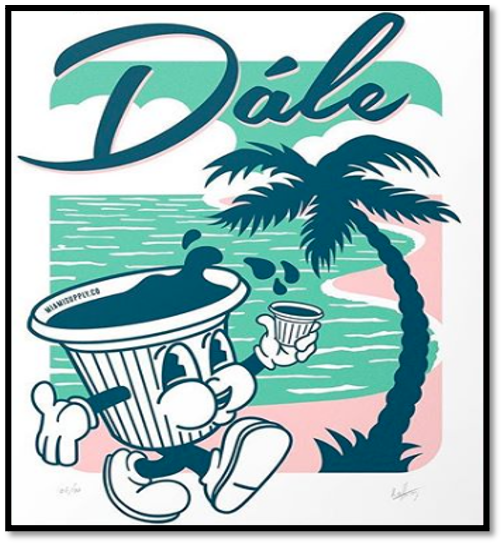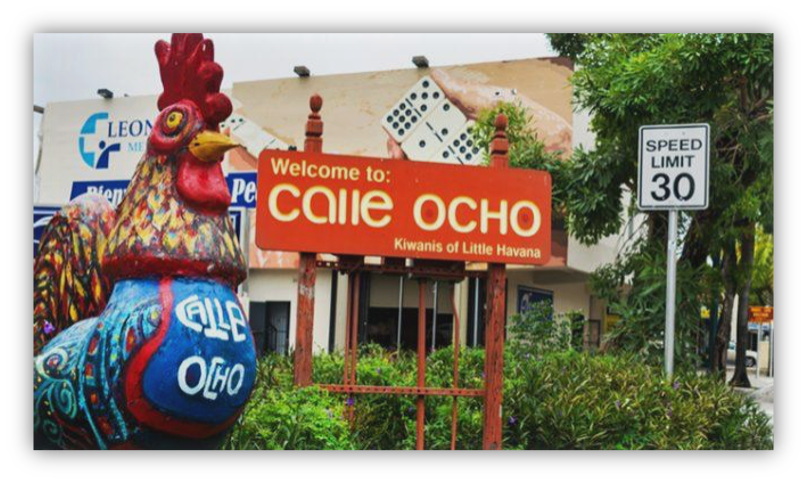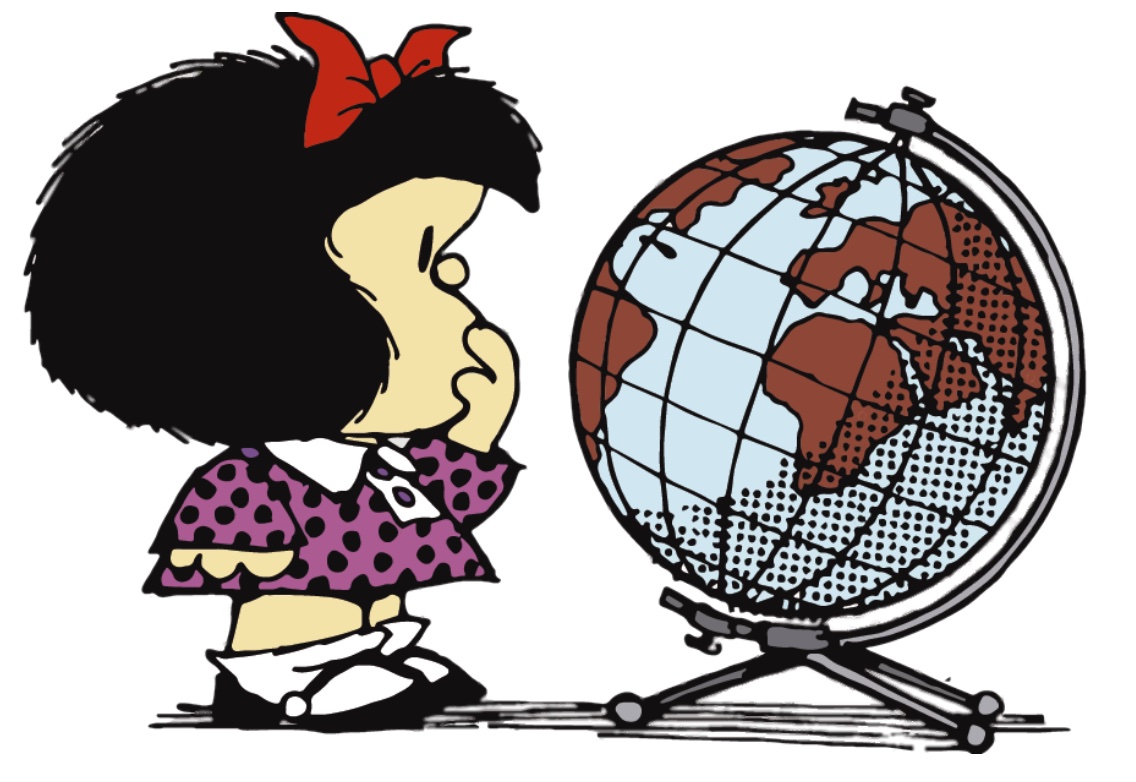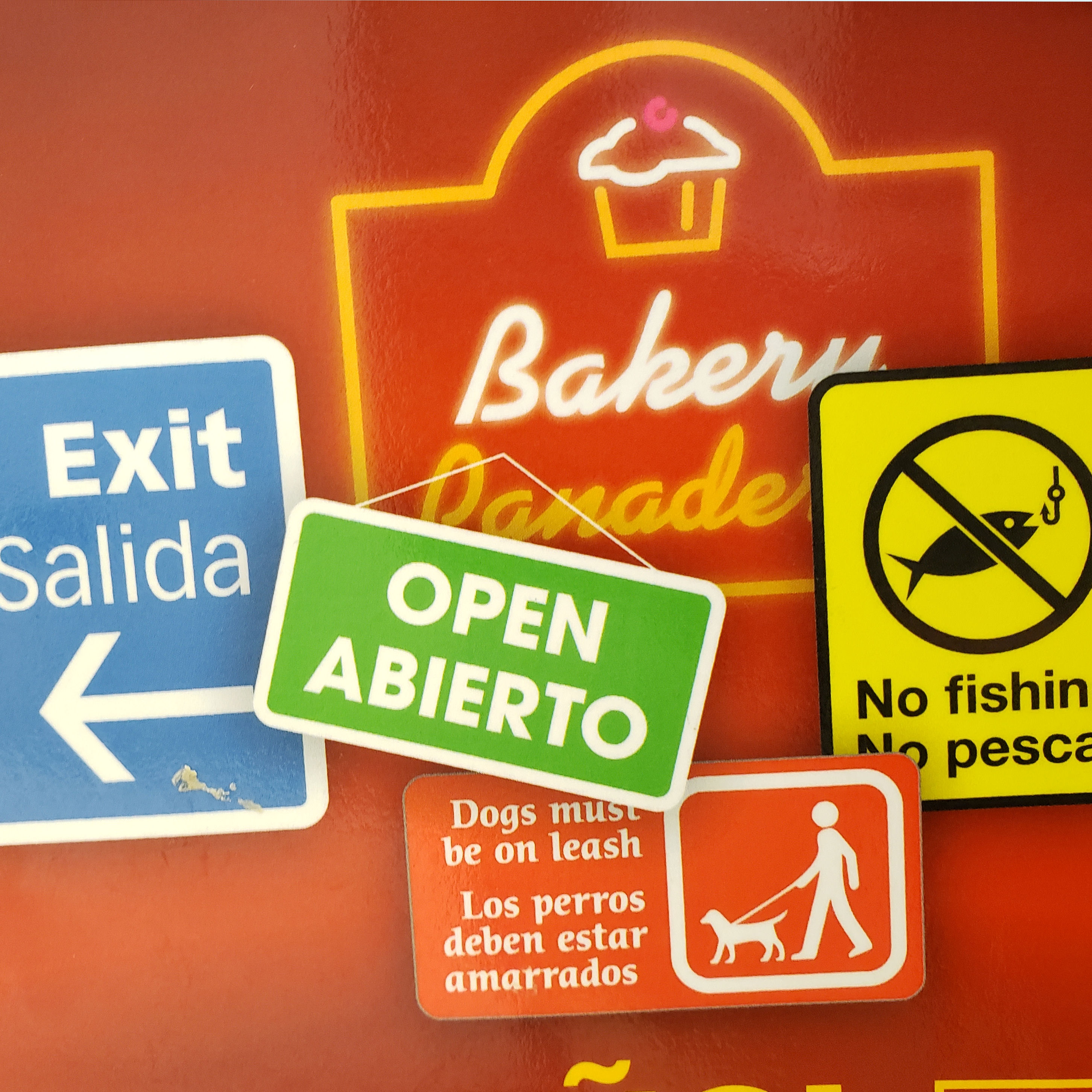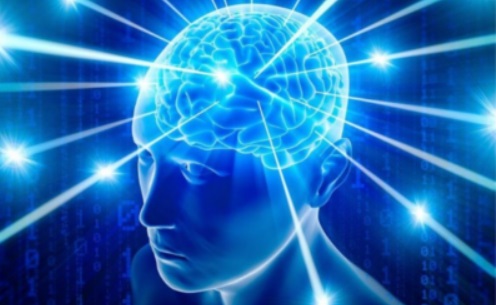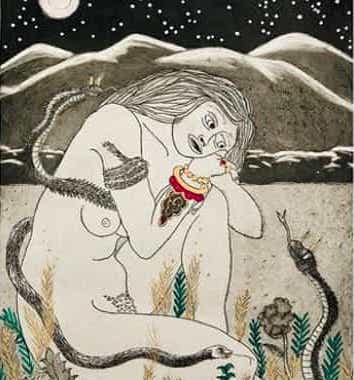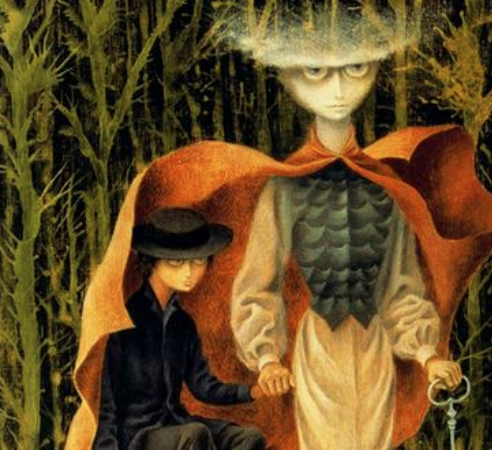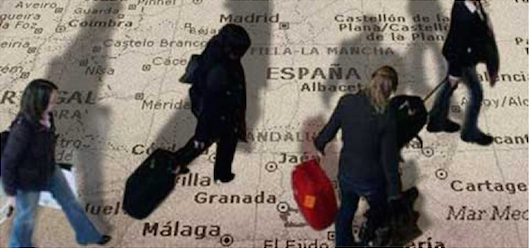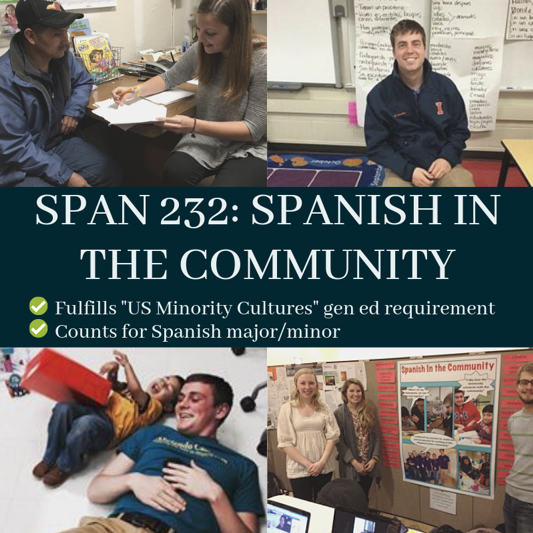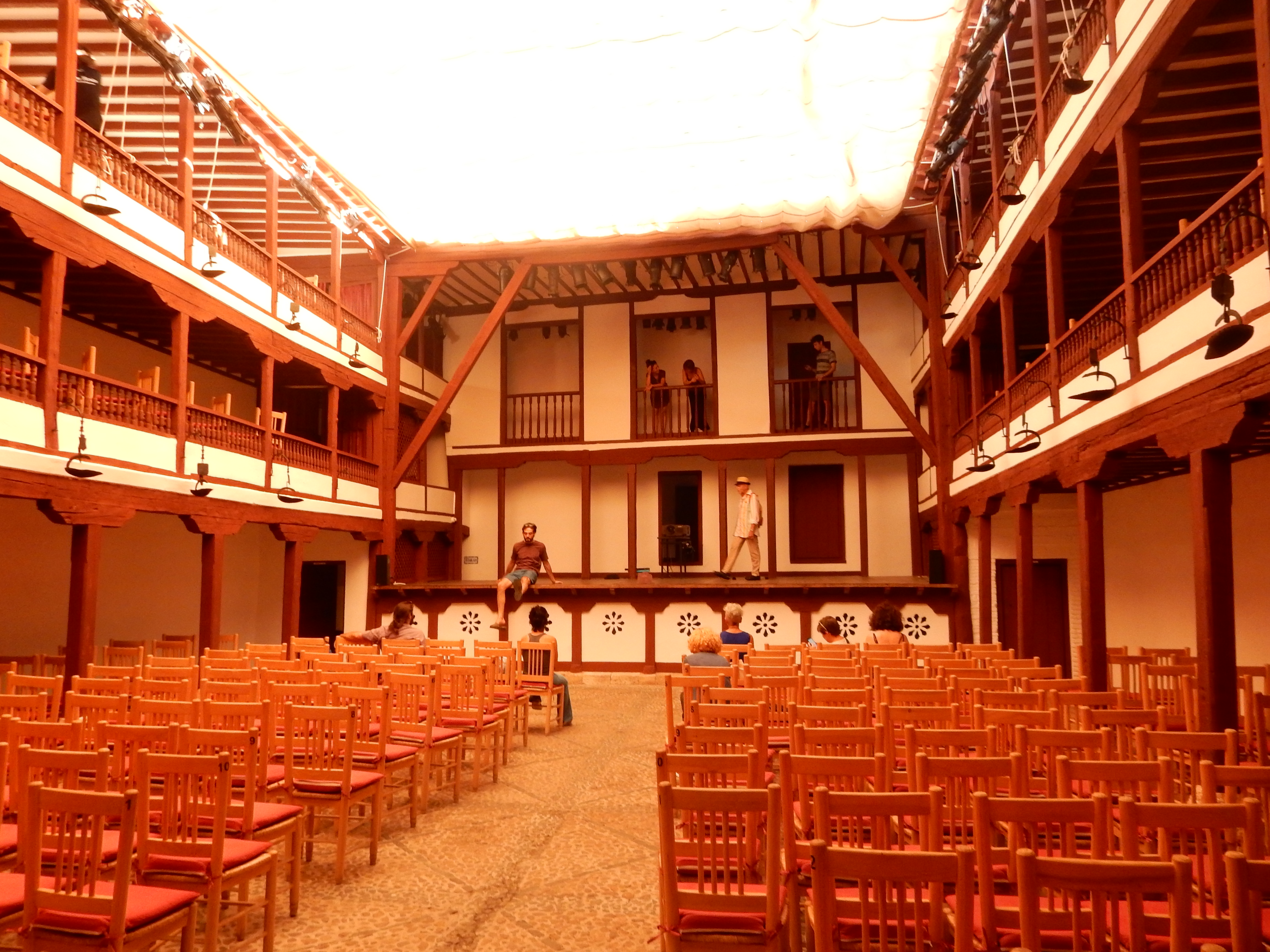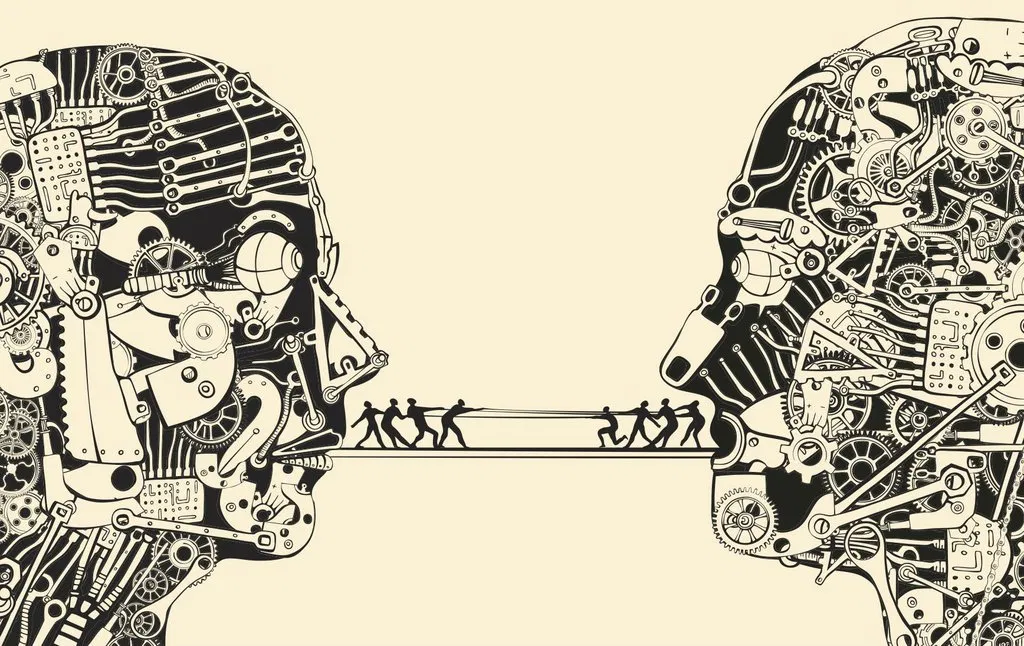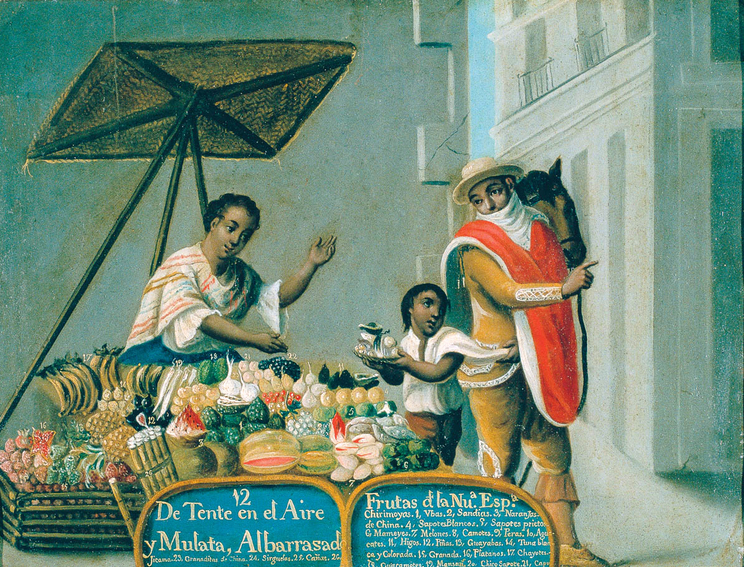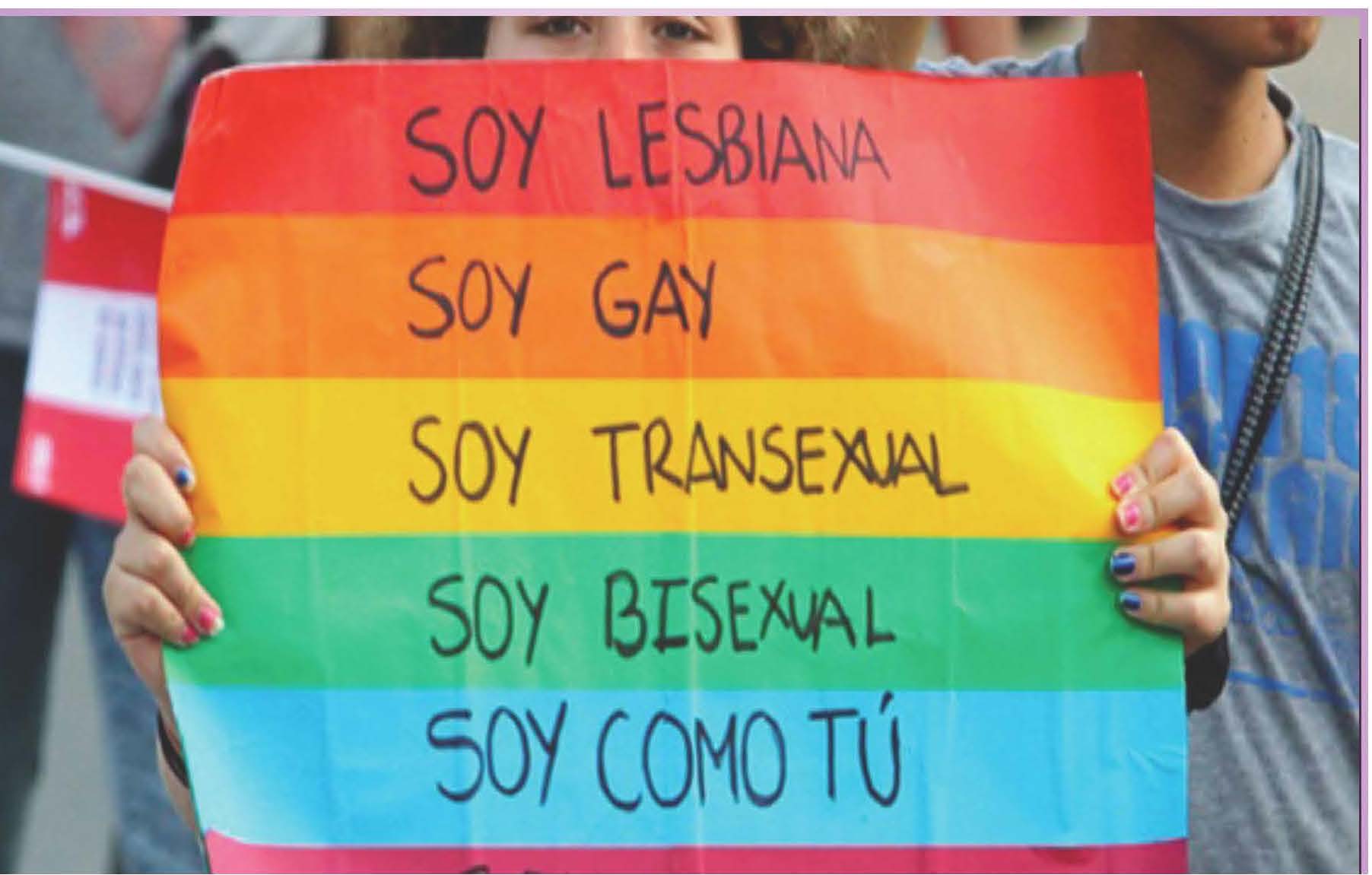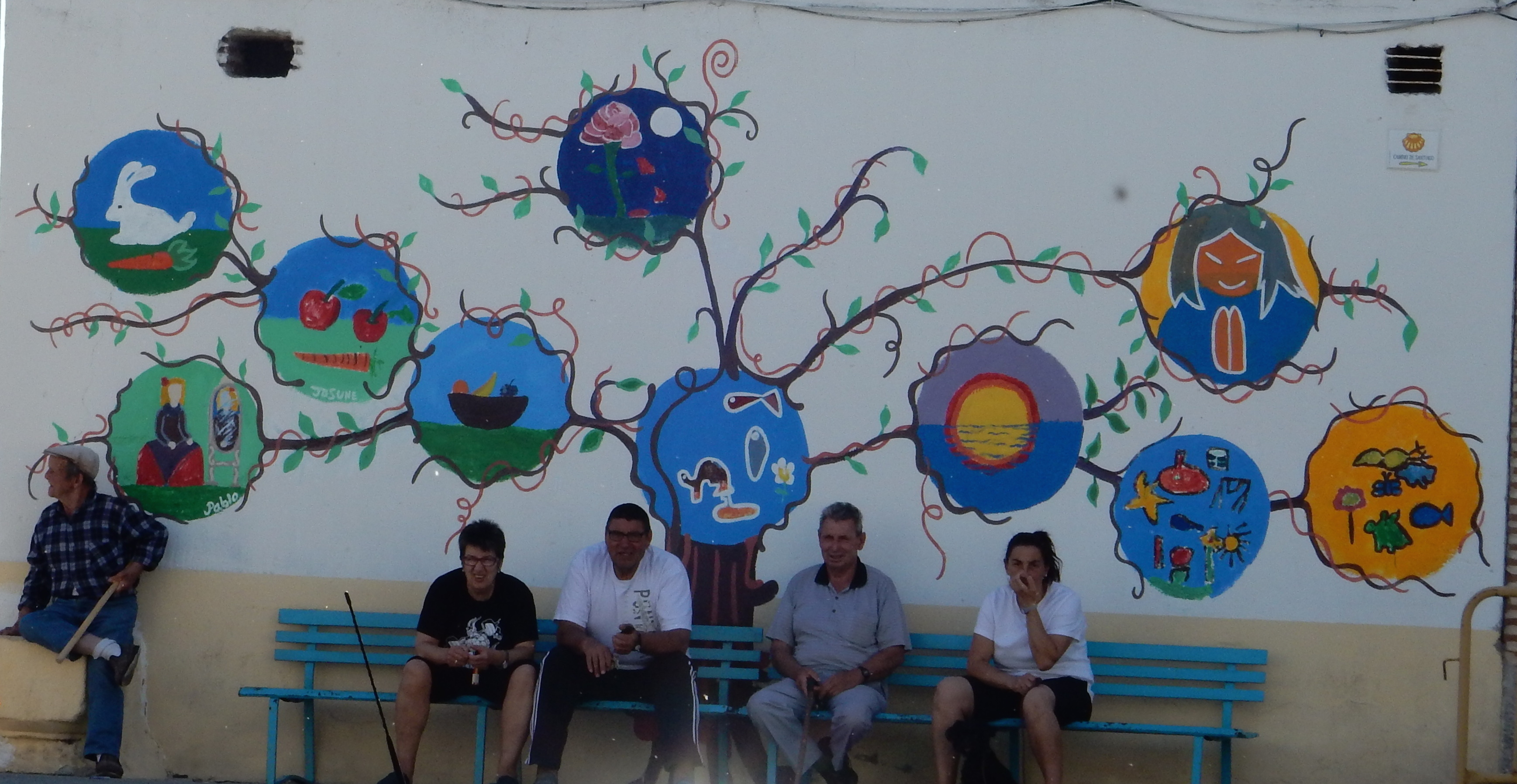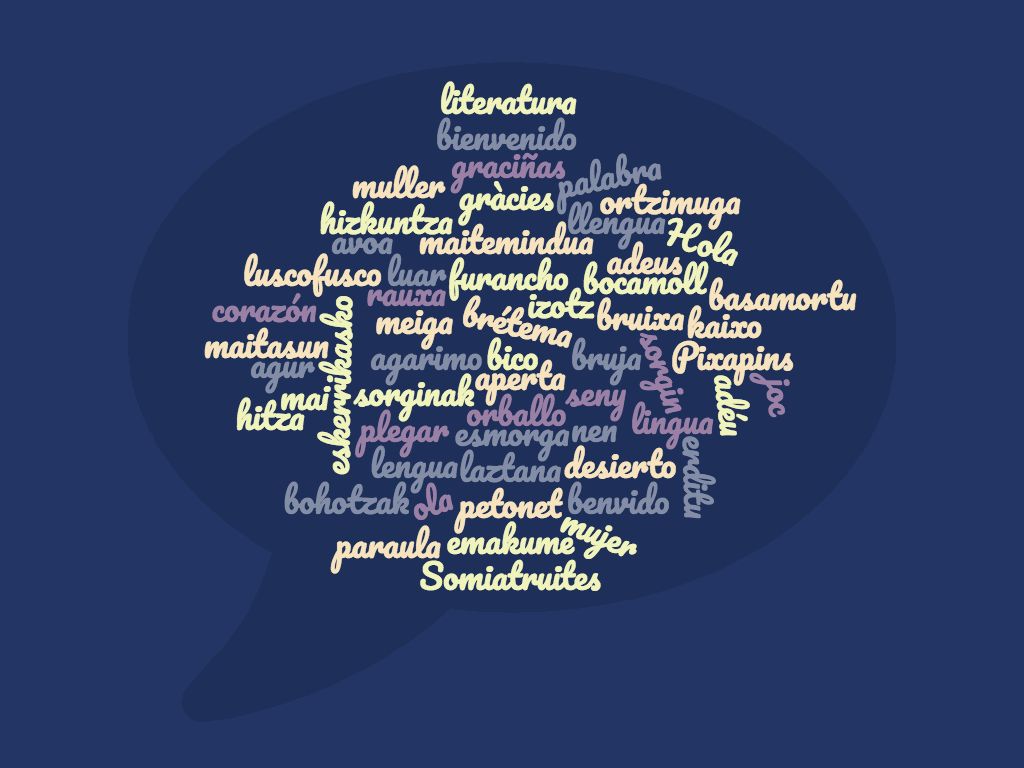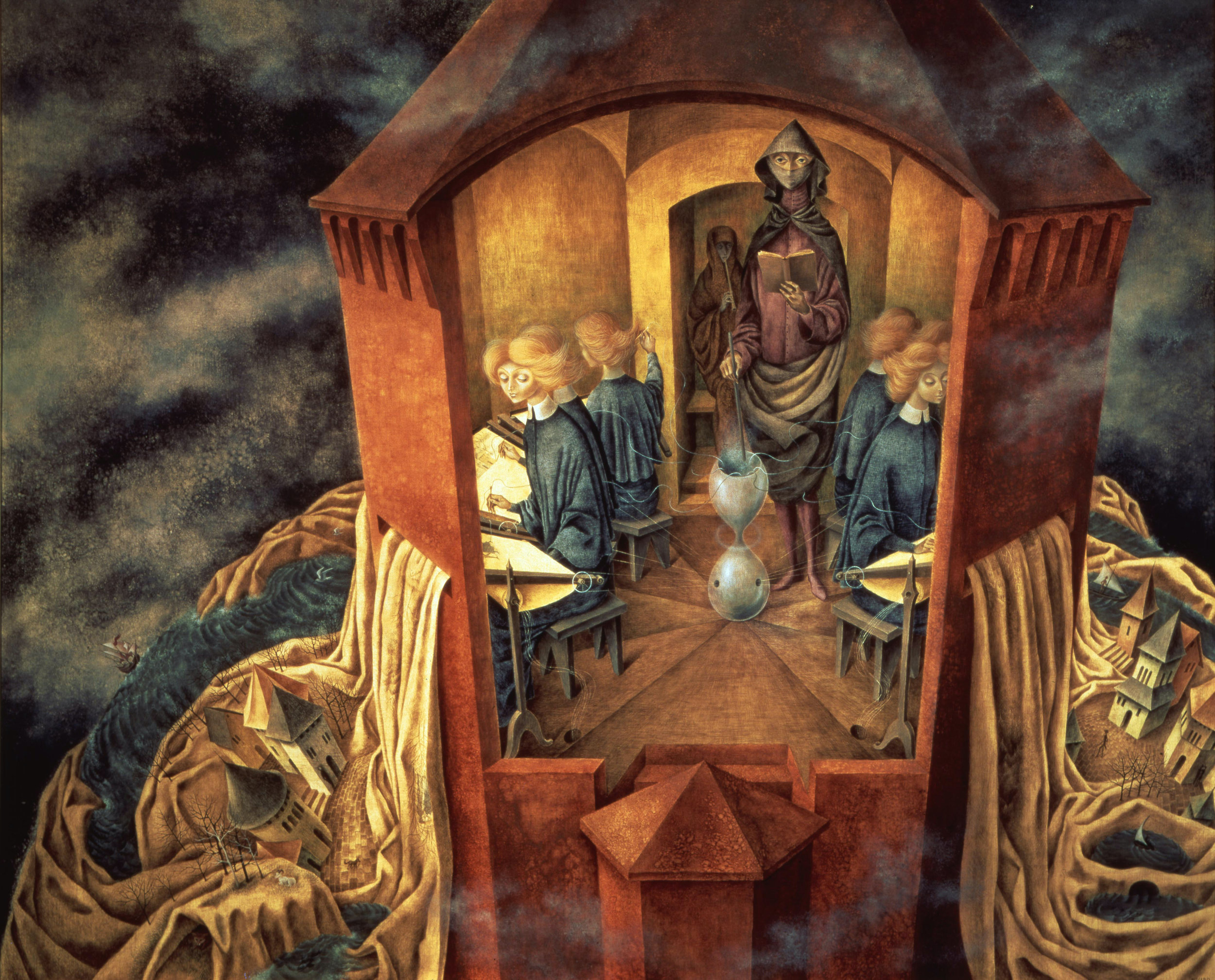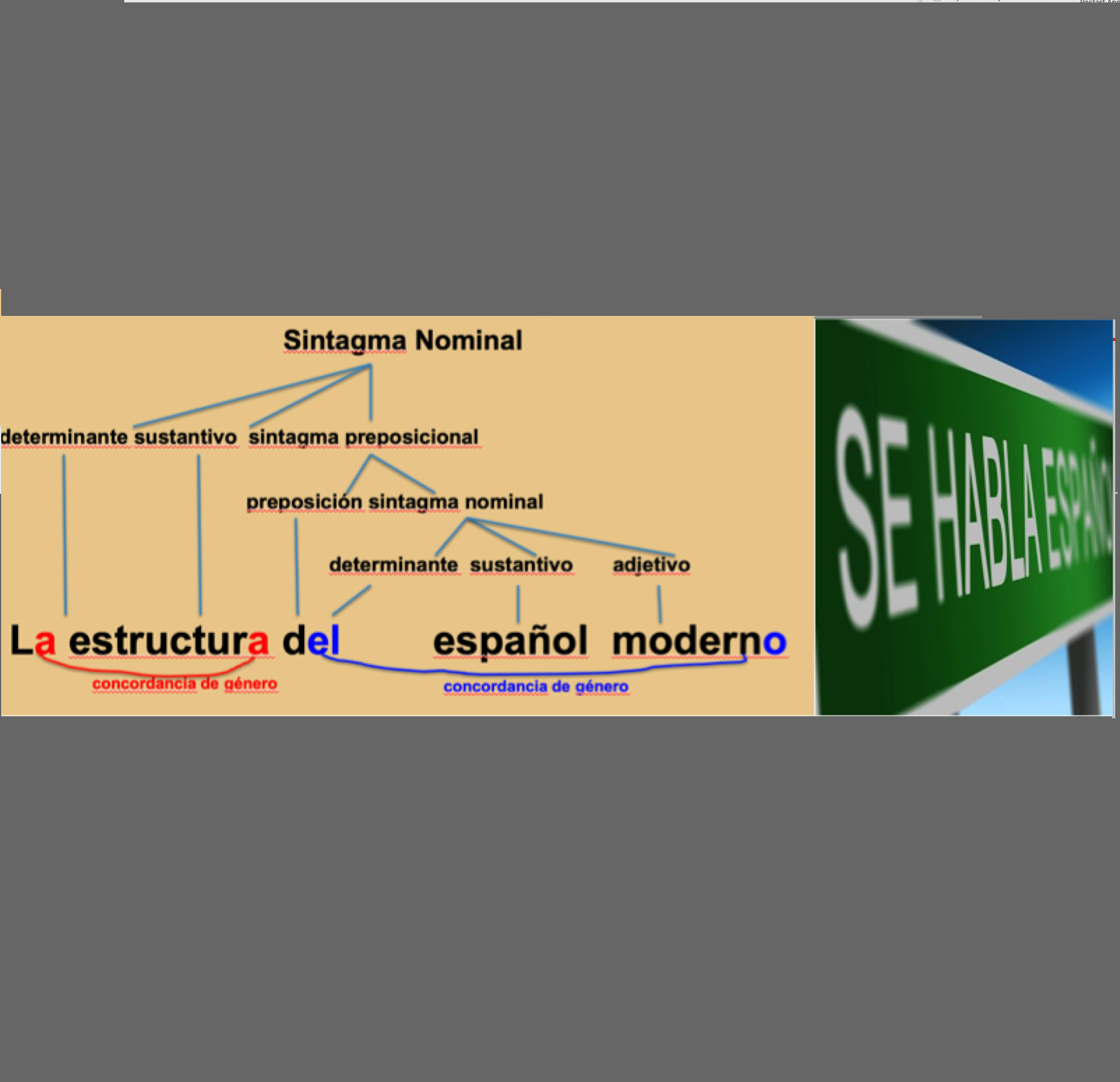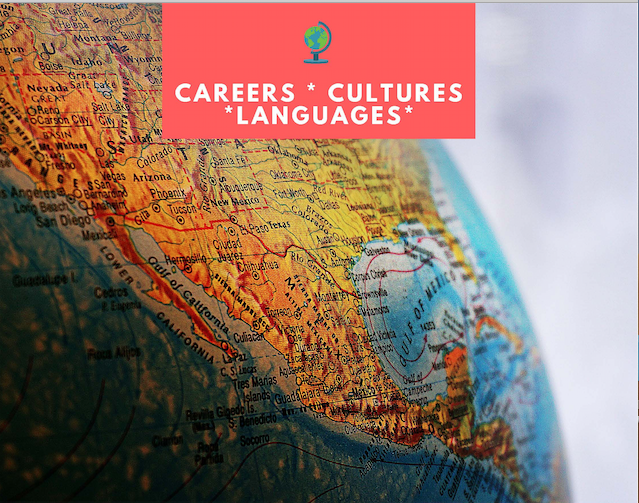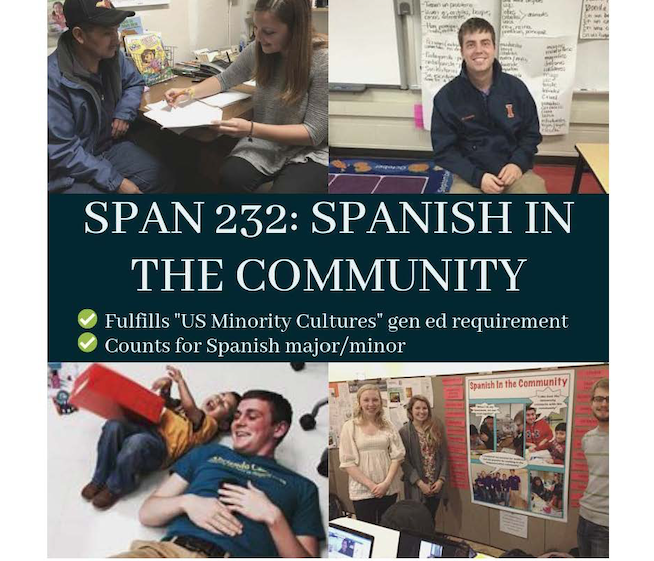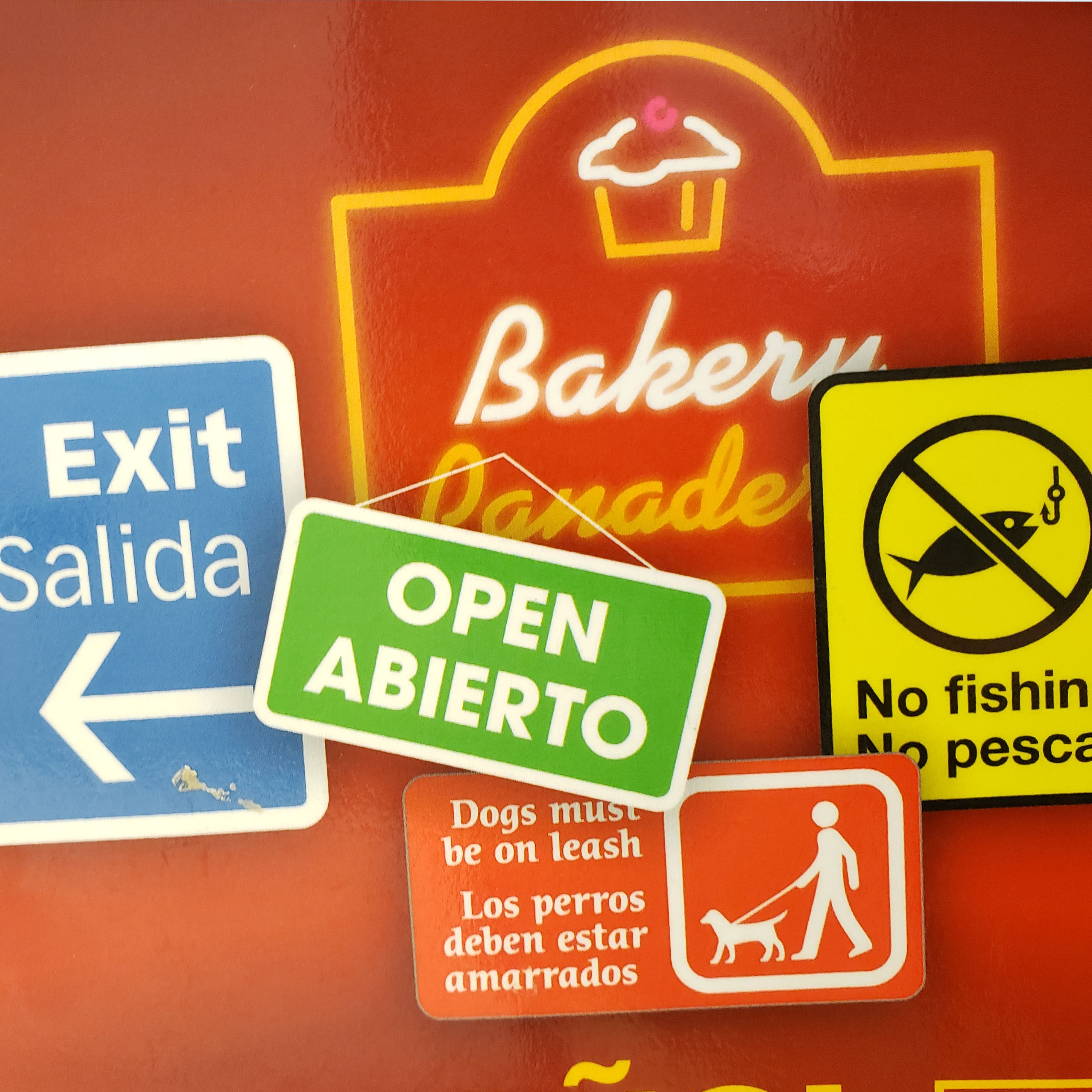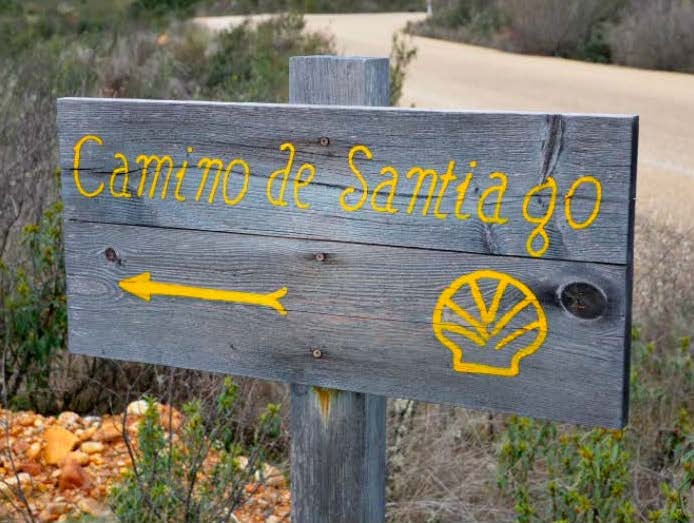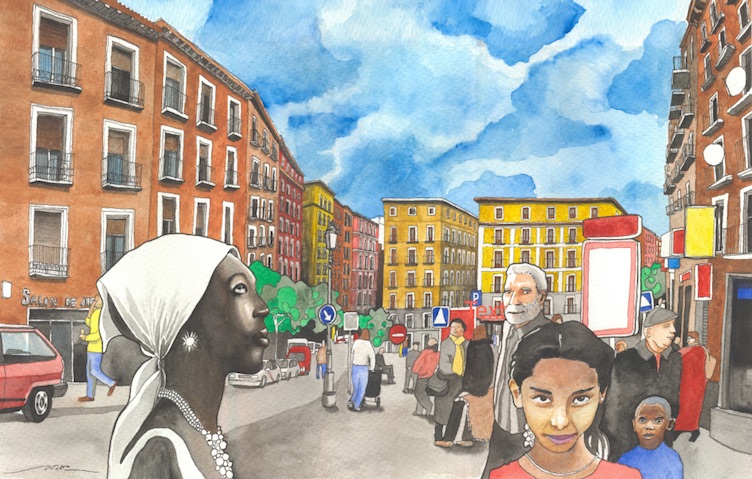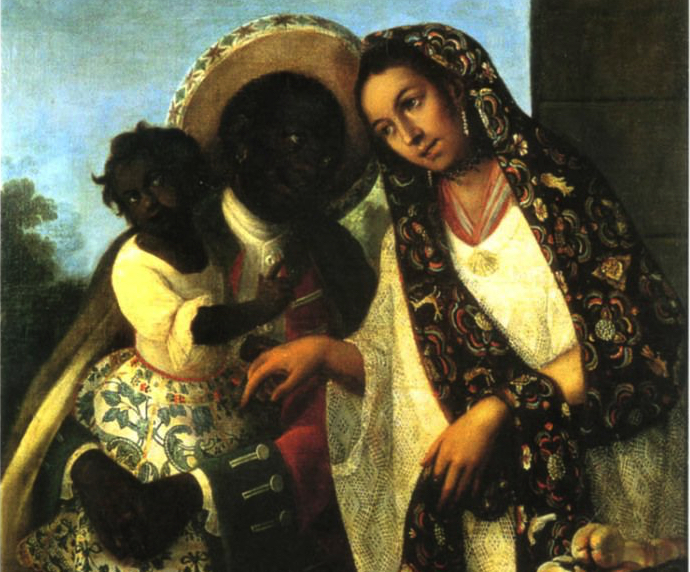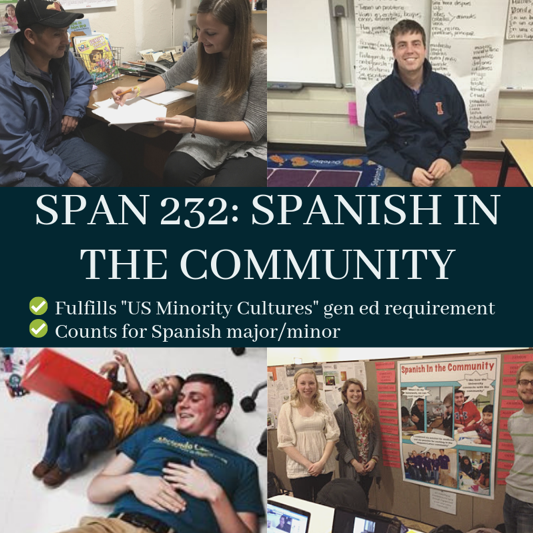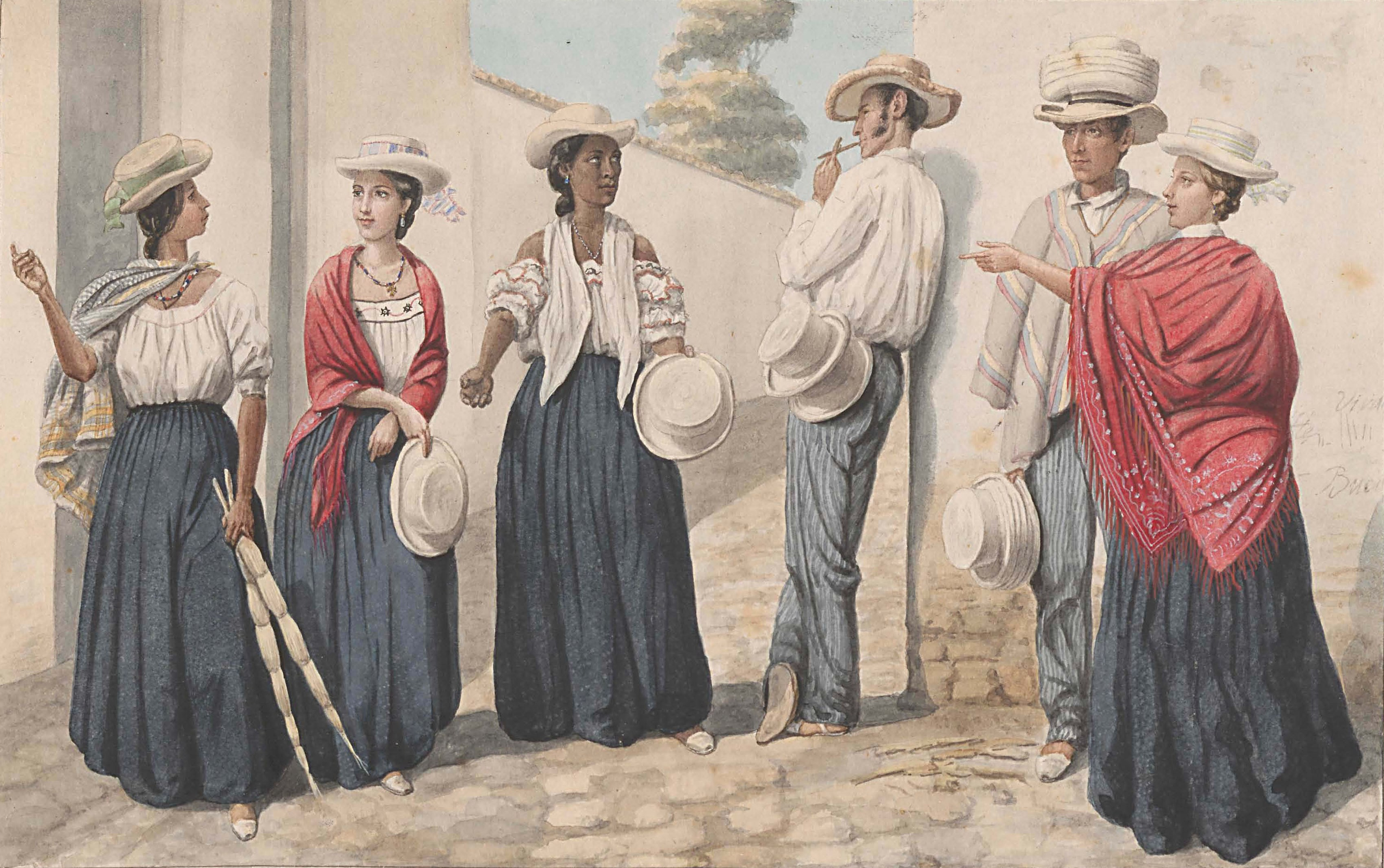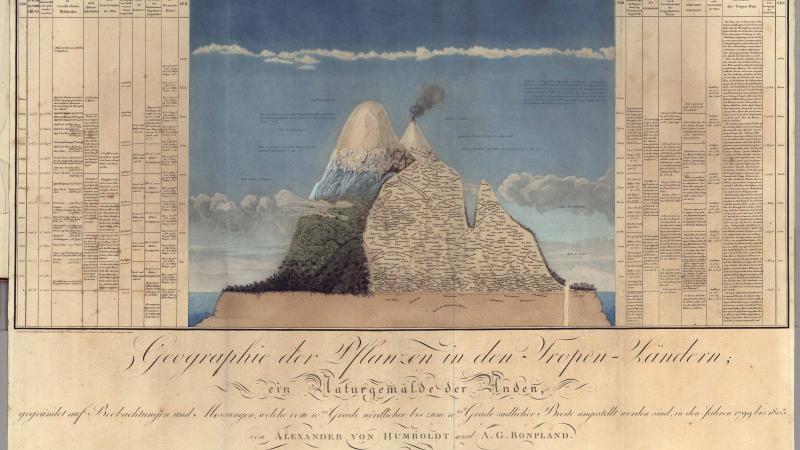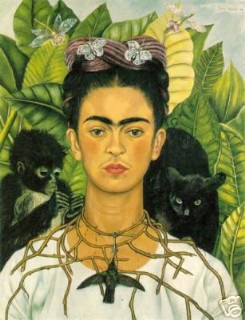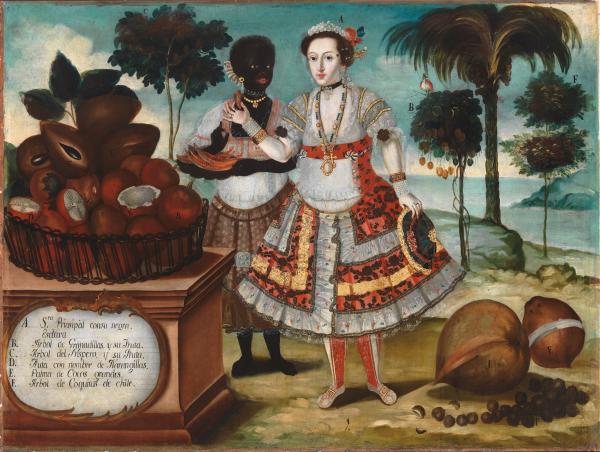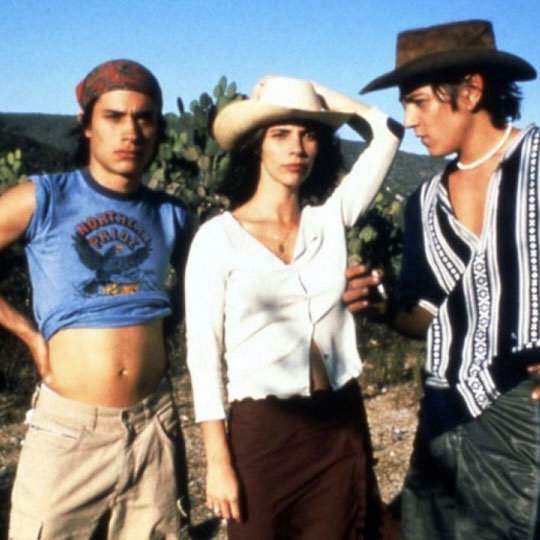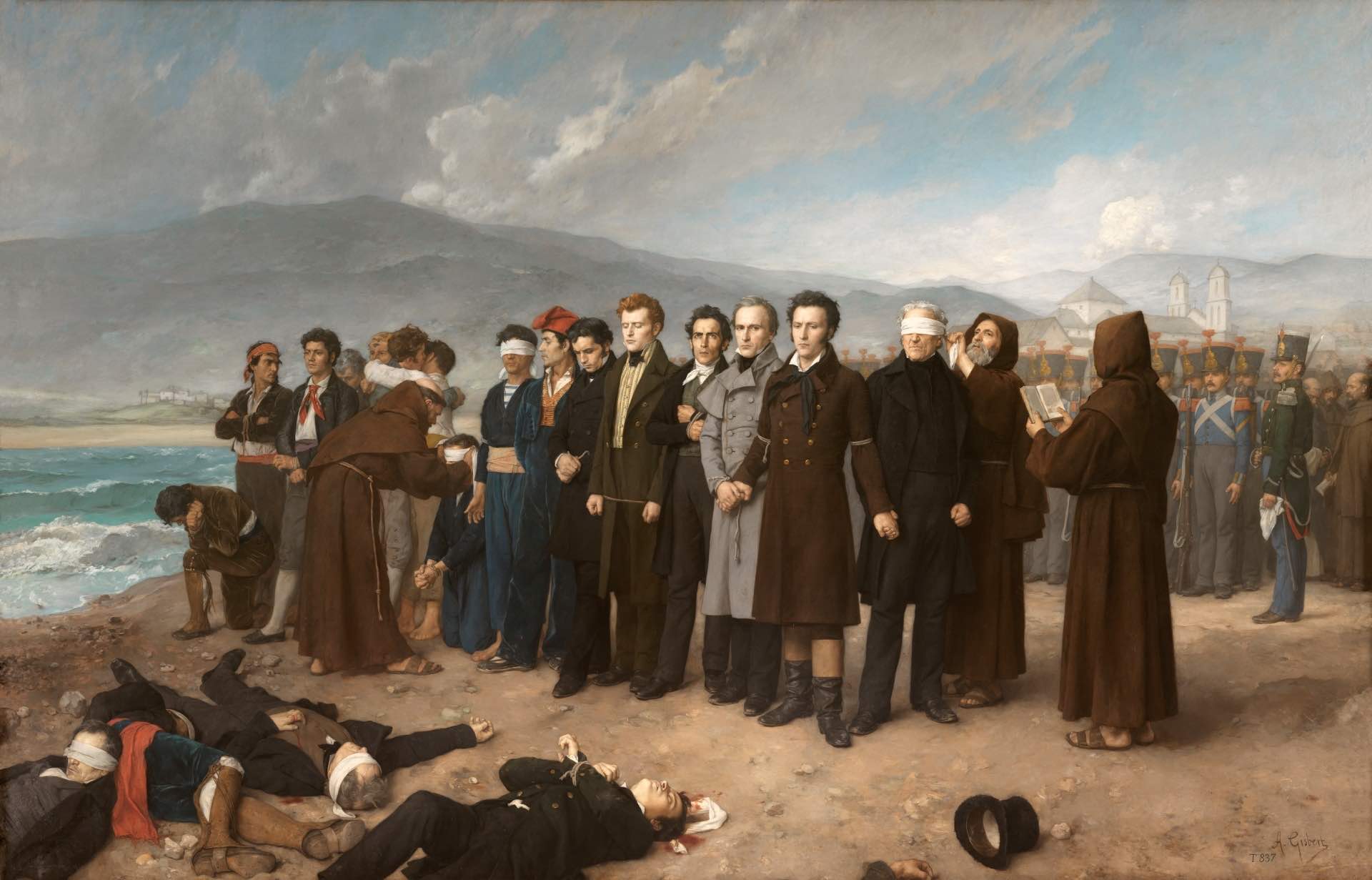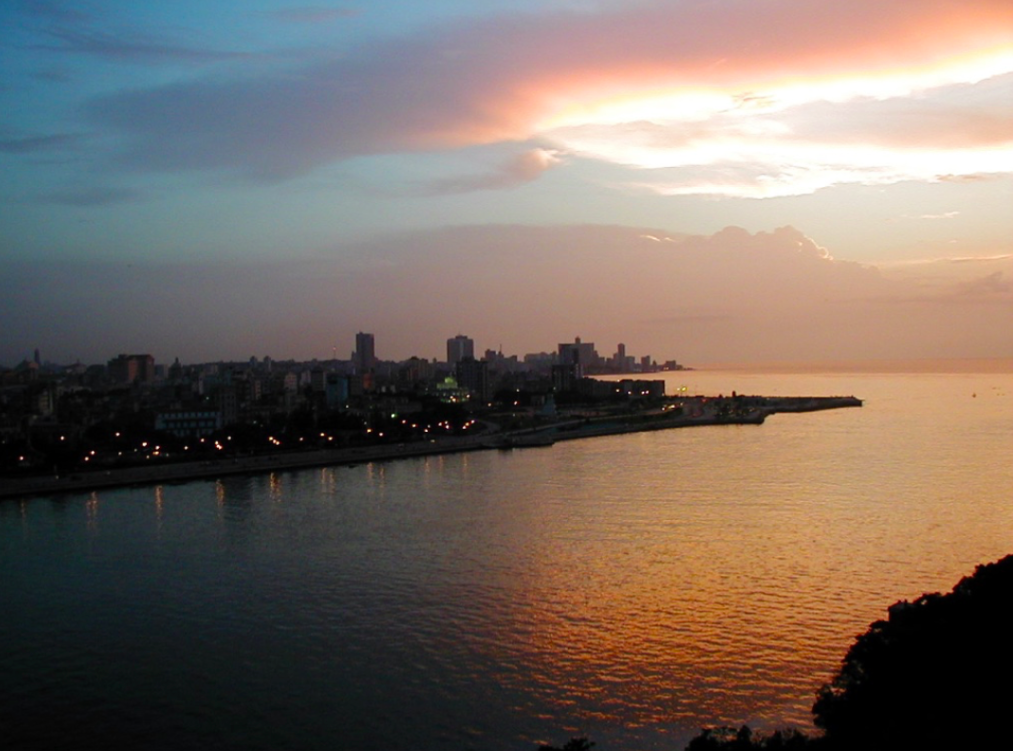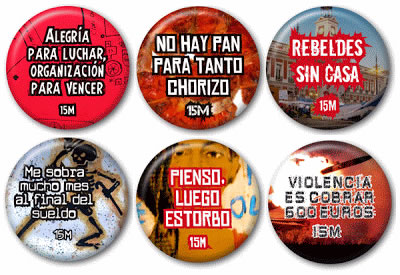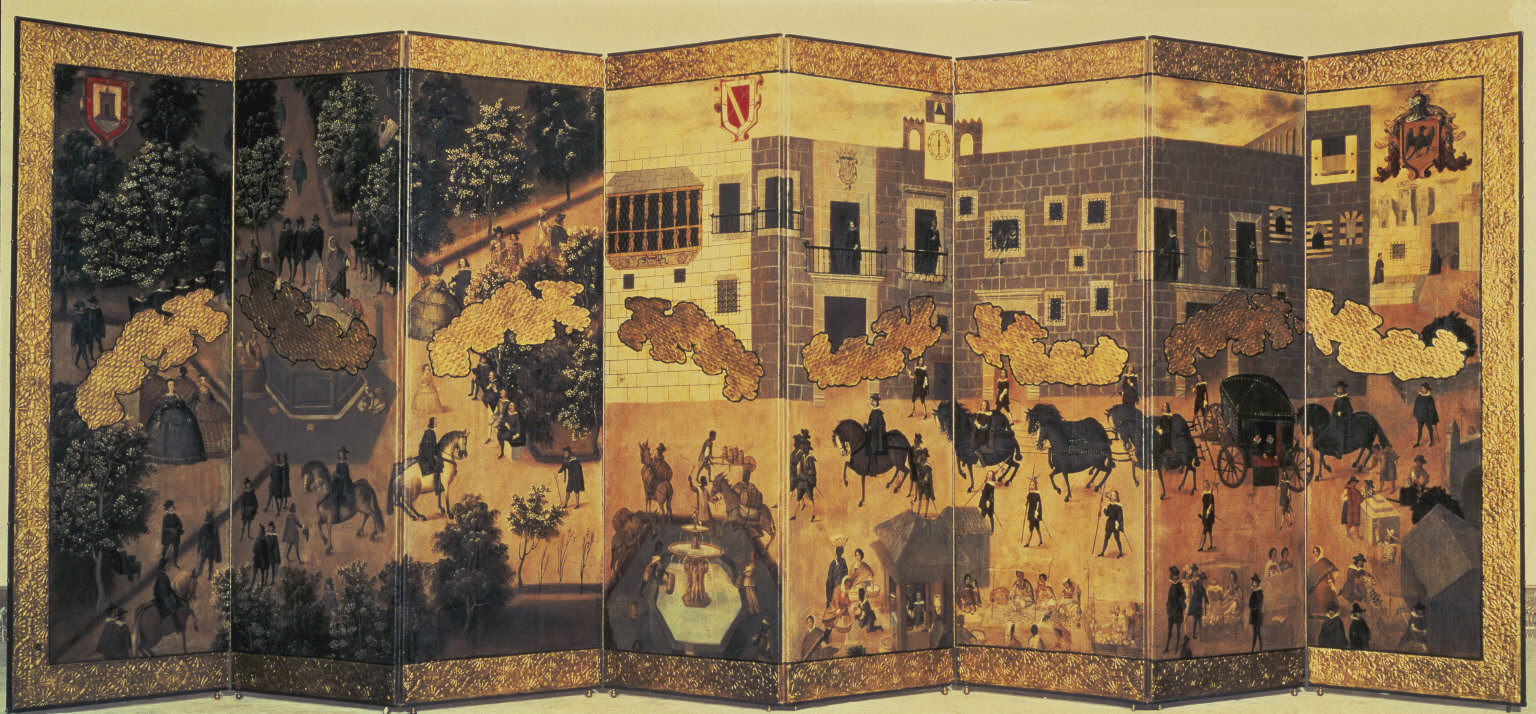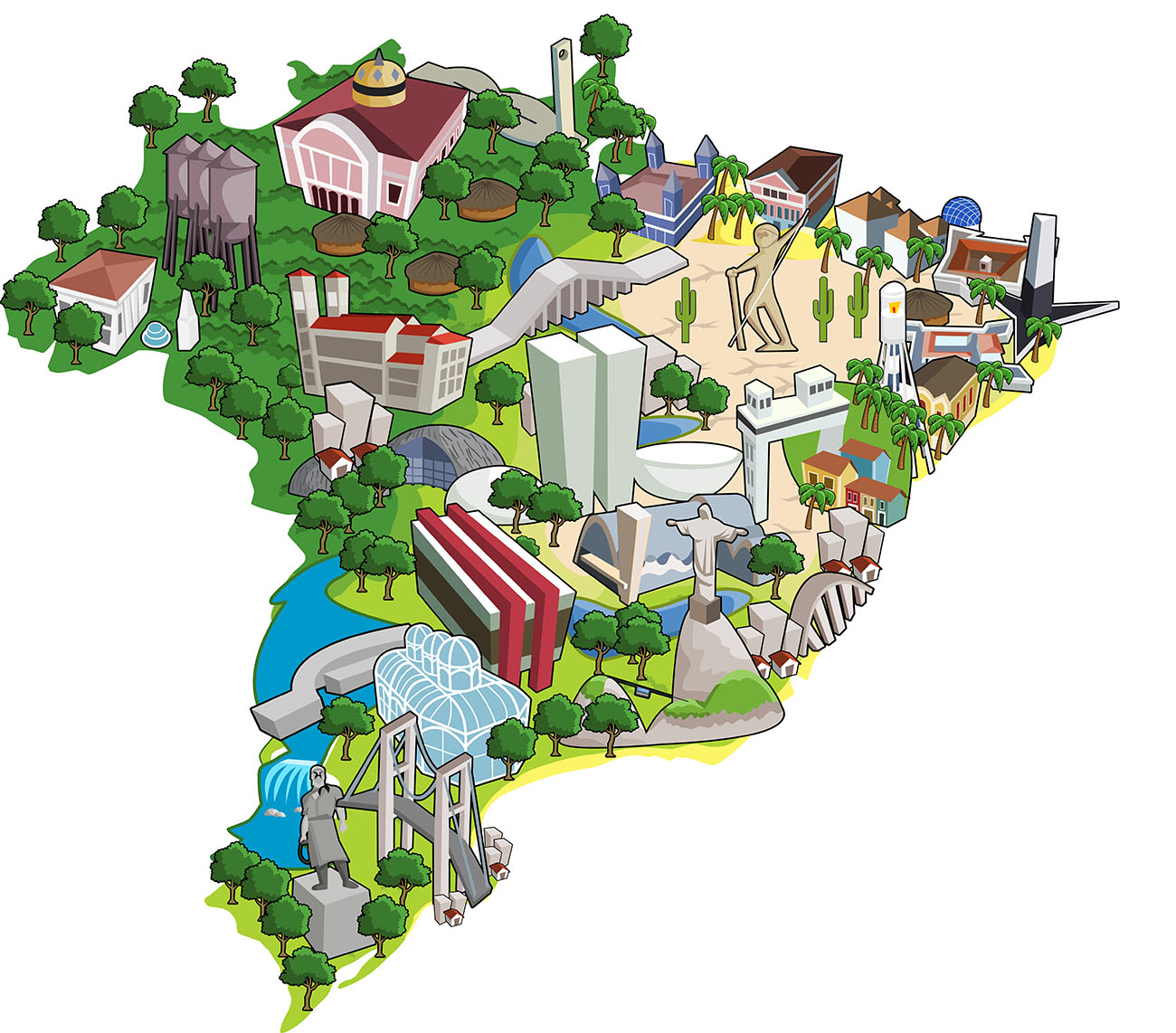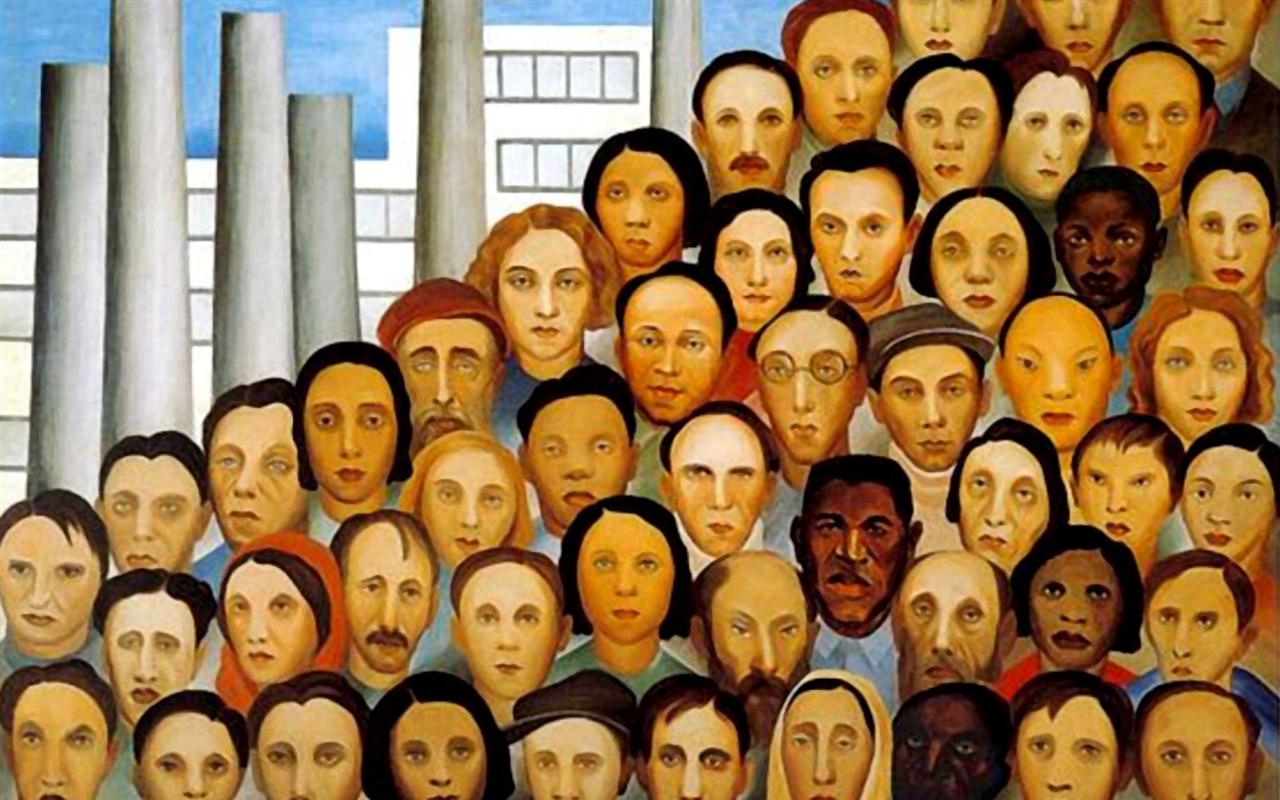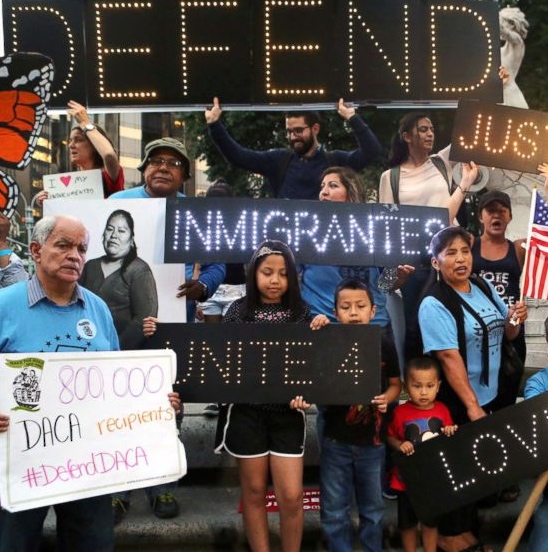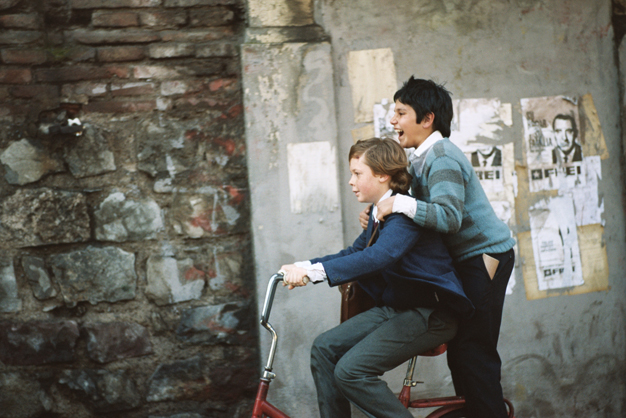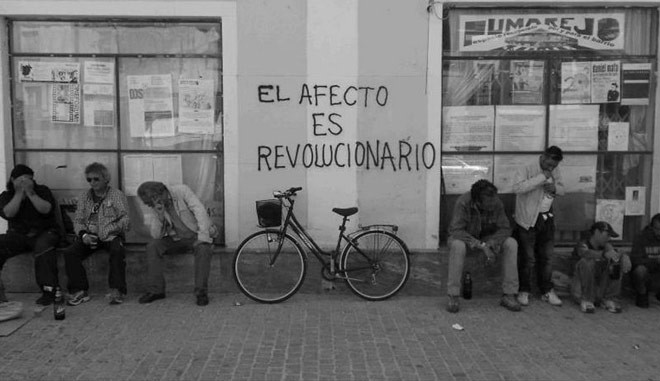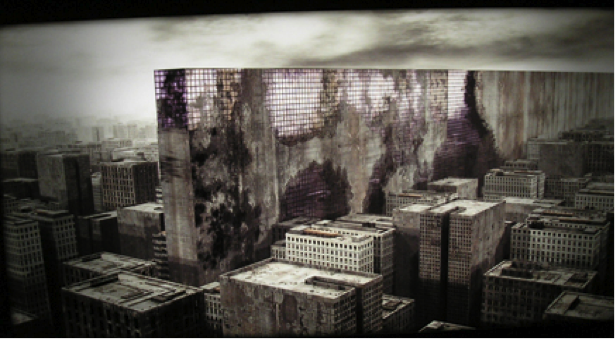It is with profound sadness that we share the news of the unexpected loss of Dara Goldman, professor of Spanish and director of the Program in Jewish Culture and Society.
Menu
More Department News
- Congratulations to Luis Gaytán Soto, awarded the 2023 Graduate Student Leadership Award.
- Prof. Silvina Montrul has been named a recipient of a Marjorie Roberts Professorship in Liberal Arts & Sciences. These prestigious named professorships are granted based on an outstanding record of scholarship.
- Danielle Massulo Bordignon has won a competitive Tinker Field Collaborative Fellowship, through CLACS. The title of her awarded project is “Insurgent Allegory: Revising Literary Style in Authoritarian Brazil”.
Calendar
- SPAN 468 - SPRING 2024This introductory, graduate-level course on Latin American cinema familiarizes students with the three fundamental areas of expertise that shape scholarship in the field: 1) the techniques of filmic analysis; 2) film theory; and 3) the history of film production in the region from the silent period...
- BASQ 402 - SPRING 2024Continuation of BASQ401, with an exhaustive initial overview. Basque is an isolate language spoken in the Basque Country of northern Spain, southern France and the Basque diaspora in Western US and elsewhere. It is unrelated to any modern language. The course may be adapted depending on enrolled...
- SPAN 590 - SPRING 2024This course moves beyond notions of passing as deceit or cheating to instead analyze how, at various moments between the Early Modern and contemporary period, representations of passing illustrate shifting attitudes about social privilege based on identity categories. We’ll consider fictional and...
- SPAN 248 (LLS 248) - SPRING 2024TAUGHT IN ENGLISH, Gen Ed for “Literature and the Arts” and “US Minority Cultures;" This course studies the relationships between Latinx and Latin American culture through exciting films. It focuses on a set of current and relevant topics (migrations, assimilation and integration, ICE, political...
- SPAN 535 - SPRING 2024This course addresses the conflictive relationship between the United States and Latin America through literature and visual culture. In 1891, Cuban writer José Martí published his essay Nuestra América, referring to Latin America as opposed to the United States and Canada. Martí...
- SPAN 326 - SPRING 2024Span 326 Mapping the Borderlands focuses on how border communities imagine, experience, and coexist in el Norte, the American Southwest, and Greater Mexico. For the queer Chicana feminist Gloria Anzaldúa, the U.S.-Mexico border is an open wound: "una herida abierta where...
- SPAN 433 - SPRING 2024An introduction to Hispanic/Latinx sociolinguistics, studying language variation and change, attitudes/ideologies, indexicality, language, race, and power, and more. The course will begin with discussions of why we study sociolinguistics and how we can use our research towards efforts in diversity...
- SPAN 309 - SPRING 2024Relationship between language, individual, and society in the context of the Spanish around the world, concentrating on Spanish varieties spoken in Spain and Latin America, including the United States, but will also give an overview of Spanish in Africa and other parts of the world. This is a...
- SPAN 326 - SECT D - FALL 2023This course explores how cinema in Mexico, from its arrival at end of the 19th century through 21st century production, has commented on and participated in constructing national identity. We will analyze canonical, landmark films as well as lesser-known works to explore how cinema engages the...
- SPAN 308 (LLS 308) - FALL 2023Did you know that the United States has over 50 million Spanish-speakers, making it the second largest Spanish-speaking population in the world, after Mexico? In this course, we will explore the past, present, and future of the many different Spanish-speaking communities in the U.S. The main...
- SPAN 535 - FALL 2023This course explores Latin American and Spanish documentary film in relation to revolutionary and social movements from the 1930s until today. Documentary is seen as a genre that has an “immediate” relationship with reality and history. The course challenges such definitions of what constitutes a...
- SPAN 326 - SECT B - FALL 2023When Mexican director Guillermo del Toro won the Academy Award for best picture, director and animated feature for Pinocchio (2023), it came as no surprise given the explosive trajectory and growing visibility of contemporary Latin American filmmakers. This exciting course explores some of...
- SPAN 316 - SECT F and X - FALL 2023In her song “Somos Sur,” Chilean singer Ana Tijoux reimagines the possibilities of solidarity and collaboration among people in Latin America and around the so-called Global South. By giving voice to those unrepresented communities in el Sur, she proposes creating resistance against injustice and...
- SPAN 324 - SECT D - FALL 2023This course examines the relationship between food, culture and society in colonial Latin America and its impact on our society today. Why we eat what we eat is a product of the encounters between these diverse societies (European, Indigenous and African) in the past and the result of subsequent...
- SPAN 312 - FALL 2023On the fantastic, speculative, and futuristic in Spain’s literature from the 18th C-present. T/TH 2:00-3:20 pm CRN 53119 Pre-req: Span 228 Instructor: Prof. Anna Torres-Cacoullos Course image credit: “Moonchild” by Santiago Caruso
- SPAN 232 - FALL 2023Learn about and from Latinx immigrants living and working in Champaign-Urbana. As you learn about their strengths and challenges, you will see how their realities reflect larger issues of immigration on a global, national and regional scale. You will hear directly from local Latinx leaders and...
- SPAN 202 - FALL 2023In this class you will actively use your Spanish every day, learn about being an effective bilingual professional and develop fundamental intercultural skills. CRN: 32868 T/R 9:30 – 10:50 1002 Siebel Center for Design Prof. Ann Abbott, arabbott@illinois....
- SPAN 312-C - Spring 2023Through the thematic frame of ‘otherness,’ this course will consider how writers of different historical moments have portrayed their experiences with the unfamiliar and distinct. Writing Otherness: Specters, Misfits, and Selves The focus of SPAN 312 is the critical analysis...
- SPAN 590 - SPRING 2023This course will examine the dismantling possibilities of the playful, ironic, and anxious modes of metafiction at the same time that it fashions a set of methods for thinking more broadly about experimentalism in literature. As sites of aesthetic experimentation, straddling the worlds of the...
- Spring 2023 - SPAN 326, Section RRIn this course, we will study the aesthetic representations of sex and sexuality in Latin American literary and artistic work from the mid-twentieth century to the present. With special attention to the influence—and resistance—of feminist, queer, and critical race theories, we will address the...
- SPAN 326 - SPRING 2023This course aims to address and complicate the body as a category and material of representation in Latin American culture in the 20th and 21st centuries. Through novels, short stories, movies, and performances, we will analyze how the body is thought of and written from diverse embodiments that...
- SPAN 535 - SPRING 2023Experimentar (verb. to experience; to experiment) leads this seminar and practicum on a study of how bodies experiment with political and cultural narratives about its experiences. Moreover, in this vein, the structure of the seminar experiments with the experience of studying bodies by blending...
- SPAN 248 (LLS 248) - SPRING 2023TAUGHT IN ENGLISH, Gen Ed for “Literature and the Arts” and “US Minority Cultures;" This course studies the relationships between Latinx and Latin American culture through exciting films. It focuses on a set of current and relevant topics (migrations, assimilation and integration...
- SPAN 557 - SPRING 2023In this sociolinguistics seminar, we will discuss the historical and contemporary applications of speech communities, communities of practice, perceptual communities, and digital communities, and how these intersect with theories in linguistic variation, social identity, , globalization,...
- SPAN 395 - SPRING 2023A course that explores how language, culture, race, public discourse and public policy intersect with the health and wellness of US Latinx communities. We will cover a variety of topics, including COVID-19 and its impact on our local immigrant community. Classes consist of discussion, active...
- SPAN 526 - SPRING 2023The Spanish Golden Age (1492-1700) has aspects that will appeal to any audience: the rise and decline of the Spanish Empire; the colonization of the New World; the union (and disunion) of the Iberian kingdoms; the persecution of Jews, Muslims, and Protestants; and the development of the first...
- SPAN 466 - FALL 2022From native Indigenous societies who inhabited the Americas, to the Europeans in search of imperial expansion, to the forced arrival of enslaved Africans to American territories, this class will study how these diverse populations constructed their own identities and sense of belonging along the...
- SPAN 312 - FALL 2022How does the category of ‘other’ disrupt the boundaries of what we might consider natural, normal, and even real? This course examines the ways in which the category of ‘other’ disrupts the borders and boundaries of what we might consider natural, normal, and even real. Readings will include...
- SPAN 465, SEC G4, U3 - FALL 2022This course serves as a panoramic introduction to Spanish literatures and cultures from the perspective of the non-heteronormative subject, from 1898 through the present. Under the label of “desvíos” the course includes a heterogeneous group of voices, experiences, historical figures and fictional...
- SPAN 320, SEC D, X - FALL 2022This course will analyze the multiple uses of humor and laughter in contemporary Spain (20th-21st century). By looking at literary texts, films, TV series, comics, and other cultural expressions, this course will explore how sharing the same sense of humor reflects and promotes a sense of belonging...
- SPAN/LLS 442/GWS 464 - FALL 2022Centralizing “trans” as not only short for “transgender,” “transexual," etc., this course lingers in the possibilities of the “trans” as that which calls us to “move across.” Through art, narrative, film, music, and performance art, TransX centralizes work by and about Latinx transgender and gender...
- SPAN/LLS 246 - FALL 2022Problematizing what we mean by “feminism,” this course complicates and extends ideas of who or what is the modern Latinx woman. From art, Latin Trap, literature, and film this is a course that brings together different versions of “feminism” through a queer Latinx lens. In this course we will...
- SPAN 202 - FALL 2022In this class you will actively use your Spanish every day, learn about being an effective bilingual professional and develop fundamental intercultural skills. CRN: 32868 T/R 9:30 – 10:50 1002 Siebel Center for Design Prof. Ann Abbott, arabbott@illinois.edu...
- SPAN 232 - FALL 2022Learn about and from Latinx immigrants living and working in Champaign-Urbana. As you learn about their strengths and challenges, you will see how their realities reflect larger issues of immigration on a global, national and regional scale. You will hear directly from local Latinx leaders and...
- SPAN 326, SEC B - FALL 2022This course aims to look at racialized feminist practices of resistance across contemporary Latin American and Caribbean culture. Beginning with Victoria Santa Cruz’s “Me gritaron negra,” students will navigate how Black and Afro-descendant women throughout Latin America and the Caribbean deploy...
- SPAN/LLS 308, SEC F - FALL 2022This sociolinguistics course provides a ‘structural’ (linguistic) and ‘critical’ (sociopolitical) overview of the language practices of various Spanish-speaking communities in the U.S. The main objective of the course is to develop critical and linguistic awareness about the relationship among...
- SPAN 307, SECTION B - FALL 2022What does it mean, in social and linguistic terms, to grow up speaking two languages or to learn a second language? This course is an introduction to the fundamental issues in the study of bilingualism as a sociolinguistic and psycholinguistic phenomenon, with special emphasis on bilingual...
- SPAN 324 - SPRING 2022Is she a traitor, a mother, or a visionary? From Mesoamerican figures and deities to colonial figures, this course reads the figure of the “woman” against the grain by placing Malinche at the center of our engagement with modern Chicanx literature and art that centralize these figures objects in...
- SPAN/LLS 246 - SPRING 2022Let’s problematize what we mean by “feminism.” Let’s complicate ideas of who or what is the modern Latinx woman. From art, Latin Trap, literature, and film this is a course that brings together different versions of “feminism” through a queer Latinx lens. In this course we will...
- SPAN 558 - SPRING 2022In this seminar, we will examine the main issues concerning the study of code-switching. Defined as the alternation of two languages within the same discourse, code-switching can be used as an effective tool to aid in the understanding of the linguistic architecture of the bi-/...
- SPAN 528 - SPRING 2022From ‘teatro irrepresentable’ to ‘poemas representables’ and ‘novelas cinematográficas,’ this course examines experimental intervention in theater, poetry, and the novel in the first decades of the twentieth century as it relates to early cinema. Centering on Spanish modernist and avant-garde...
- SPAN 467 - SPRING 2022How have Latin American nations defined equality? What were the struggles for social justice during the first century of independence? How have those forces shaped the region? The 19th century is a period of great progress and extraordinary turmoil in Latin America. As the region struggles to carve...
- SPAN 395 - SPRING 2022A new course that explores how language, culture, race, public discourse and public policy intersect with the health and wellness of US Latinx communities. We will cover a variety of topics, but our main area of focus will be on COVID-19 and its impact on our local immigrant community and at a...
- SPAN 232 - SPRING 2022Learn about and from Latinx immigrants living and working in Champaign-Urbana. As you learn about their strengths and challenges, you will see how their realities reflect larger issues of immigration on a global, national and regional scale. You will hear directly from local Latinx leaders and...
- SPAN 248 (LLS 248) - FALL 2021TAUGHT IN ENGLISH, Gen Ed for “Literature and the Arts” and “US Minority Cultures;" This course studies the relationships between Latinx and Latin American culture through exciting films. It focuses on a set of current and relevant topics (migrations, assimilation and integration...
- SPAN 535 - FALL 2021Why is extractivism the dominant paradigm for development in Latin America? And how can cultural production, from literature to film, help contest its damaging effects and imagine other ways of relating to the nonhuman world?
- SPAN 254 - FALL 2021In this class, students examine how culture shapes the values, beliefs, and artistic production of Iberian, Latin American, and Latinx communities. We will focus on a range of issues relevant to the Spanish-speaking world, including questions of race, gender, sexuality, and class. Students will...
- SPAN 202 - FALL 2021In this class you will actively use your Spanish every day, learn about being an effective bilingual professional and develop fundamental intercultural skills. CRN 32868 T/R 9:30 – 10:50 Location Pending Prof. Ann Abbott, arabbott@illinois.edu,...
- SPAN 232 - FALL 2021Learn about and from Latinx immigrants living and working in Champaign-Urbana. As you learn about their strengths and challenges, you will see how their realities reflect larger issues of immigration on a global, national and regional scale. You will hear directly from local Latinx leaders and...
- SPAN 326 - FALL 2021This course will examine the role of music in Latin American self-expression. From tango to reggaetón, Latin American musical forms have become global sensations. At the same time, they have been central components of regional and national identities, playing an integral part in cultural rituals...
- SPAN 433 - FALL 2021SPAN 433 (49433 for graduate students, 49678 for undergraduate): Through this course students will learn the fundamental theories and practices of how languages (i.e. Spanish, English, Portuguese) interact with societies and individuals, which is known as sociolinguistics (pre-requisites are SPAN...
- SPAN 308 - SEC F - FALL 2021SPAN 308 (Section F, 60345): This sociolinguistics course, cross-listed with LLS 308, provides a ‘structural’ (linguistic) and ‘critical’ (sociopolitical) overview of the linguistic practices of various Spanish-speaking communities in the U.S. The main objective of the course is to develop critical...
- SPAN 320 SEC D - FALL 2021In this course, we will explore the construction of the image of Spain for foreign consumption from the turn of the twentieth Century to the present. We will analyze the presence of Spain beyond its borders, including aspects such as military and economic colonialism, migration, tourism, sports,...
- SPAN 312 SEC X, B - FALL 2021What have been the political and cultural relations between Spain and Latin America in recent years? From a transatlantic perspective, we will explore key issues in Hispanic culture today through the study of literature, film, art,and music. Topics to be discussed include national identity;...
- SPAN 324 SEC B - SPRING 2021How we understand Latin American culture through the contributions of African slaves and African descendent people since the formation of the colonies to the present. How do we understand Latin American culture through the diverse contributions of African slaves and African descendent people since...
- SPAN 308 - SPRING 2021Did you know that the United States now has over 50 million Spanish-speakers, making it the second largest Spanish-speaking population in the world, after Mexico? In this course, we will explore the past, present, and future of the many different Spanish-speaking communities in the U.S. The main...
- SPAN 535 - SPRING 2021This course explores the transnational cinema of Mexican director Guillermo del Toro as a complete oeuvre with a particular aesthetic, technical and ideological project. It is a comprehensive study of a prominent filmmaker with a distinctly recognizable style that has captivated global audiences...
- SPAN 307 - SPRING 2021What does it mean, in social and linguistic terms, to grow up speaking two languages or to learn a second language? This course is an introduction to the fundamental issues in the study of bilingualism as a sociolinguistic and psycholinguistic phenomenon, with special emphasis on Spanish bilingual...
- SPAN 246 - SPRING 2021Taught in English, this course considers how gendered and sexed bodies have been imagined in contemporary Latina/o literature and visual culture (photography, digital graphics, murals, mixed media, music videos, and cinema/tv). Bodies out of Place: Destabilizing Geographies of Identity...
- SPAN 254 - SPRING 2021An introduction to cultural analysis and interpretation. Students will analyze a range of cultural objects, including film, visual art, and literature, to think about how culture shapes our understanding of the world. Discussion will emphasize cultural issues in the context of Spain, Latin America...
- SPAN 326 - SPRING 2021This course is an introduction to the classics of Mexican Cinema, from silent film until today. How has cinema shaped ideas about Mexican identity? How does it help us understand important events like the Mexican Revolution or key contemporary issues like immigration? We will explore this question...
- SPAN 320 - SPRING 2021In this course, we will explore the construction of the image of Spain for foreign consumption from the turn of the twentieth century to the present. We will analyze the presence of Spain beyond its borders, including aspects such as military and economic colonialism, migration, tourism, sports,...
- SPAN 312 - SPRING 2021This course will examine how both emigration and immigration have been portrayed in the Spanish literature and in others cultural manifestations since 1900 to the present. In order to analyze the different Spanish migrations, the course will explore the historical, political, social, and economic...
- SPAN 232 - SPRING 2021Learn about and from Latinx immigrants living and working in Champaign-Urbana. As you learn about their strengths and challenges, you will see how their realities reflect larger issues of immigration on a global, national and regional scale. You will hear directly from local Latinx leaders and...
- SPAN 332 - SPRING 2021Learn the fundamentals of social entrepreneurship, a practice that seeks opportunities at the nexus of languages, cultures and communities. We will focus on the question of how to create linguistically- and culturally-appropriate programming within nonprofits. To make those nonprofits sustainable...
- SPAN 310 - FALL 2020This course will analyze dramatic texts from seventeenth-century Spain, paying especial attention to issues of racial, gender, and class identity, and how these themes can resonate to contemporary audiences. Beyond reading and interpreting dramatic texts, the emphasis of the course will be on...
- SPAN 248 - FALL 2020TAUGHT IN ENGLISH, Gen Ed for “Literature and the Arts” and “US Minority Cultures;" The aim of this course is to study the relationships between Latinx and Latin American culture through film. It does so by focusing on a broad set of sociohistorical processes (migrations,...
- SPAN 528 - FALL 2020According to Jacques Rancière art, like politics, is not by nature consensual, but rather “dissensual.” This is because of art's capacity to create not only identifications that are different from those which are given to us, but also identifications that at one point are believed to be unviable...
- PORT 150 - FALL 2020This course looks at Brazilians in the U.S. through the interdisciplinary approaches of cultural studies and ethnic studies. Students will learn how Brazilian identity in the U.S. is not uniform or static, but rather historically contingent, plural, and contested, and how migrants and their...
- SPAN 324 SEC A - FALL 2020This course focuses on the profound cultural and symbolic continuities and changes of religious myths and rituals in Latin America from the past to the present. Tracing religious texts and practices from the Pre-Colombian era, through colonialism and postcolonialism, through the present, this...
- SPAN 324 SEC B - FALL 2020This course examines the relationship between food, culture and society in colonial Latin America and its impact on our society today including the US. Why we eat what we eat is a product of the encounters between these diverse societies (European, indigenous and African) in the past and the result...
- SPAN 320 SEC X - FALL 2020This course serves as a panoramic introduction to Spanish literatures and cultures from the perspective of the non-heteronormative subject, from 1898 through the present. Under the label of queer the class includes a heterogeneous group of voices, experiences, historical figures and fictional...
- SPAN 320 SEC D - FALL 2020In this course, we will explore the construction of the image of Spain for foreign consumption from the turn of the twentieth Century to the present. We will analyze the presence of Spain beyond its borders, including aspects such as military and economic colonialism, migration, tourism, sports,...
- SPAN 312 - FALL 2020We will analyze some of Basque (Euskera), Galician, Catalan literature masterpieces by paying attention to issues of linguistic deterritorialization, politicization, visibility, and cultural translation. All of these languages have a long history and rich literatures. However, unlike Castilian,...
- SPAN 572 - FALL 2020An overview of critical theories for the analysis of literary and cultural texts since the mid-20th century, including Spanish, Latin American, Luso-Brazilian, and U.S. Latinx schools of thought. On one level, this seminar functions as a presentational overview of major critical theories and...
- SPAN 305 - FALL 2020An in-depth investigation of the structure of Spanish, with a secondary focus on syntactic variation, especially structural differences with English. Introduces concepts and techniques essential for syntactic analysis and description. Taught in Spanish. Prerequisite: SPAN 252 or consent of...
- SPAN 468 - FALL 2020During the mid- and late-20 century, Latin American novels and short stories became international sensations, enjoying unprecedented commercial and critical success. “Fantastic Fictions” will examine several of the most celebrated canonical and emergent authors in Spanish America. From Borges to...
- SPAN 202 - FALL 2020In this class you will actively use your Spanish every day, learn about being an effective bilingual professional and develop fundamental intercultural skills. CRN 32868 T/R 9:30 – 10:50 1024l Foreign Languages Building Prof. Ann Abbott, arabbott@...
- SPAN 232 - FALL 2020In this service-learning course, you will learn with and from local Latinx immigrants as you volunteer two hours each week with a local organization that serves our immigrant community. Time in the classroom focuses on immigration policies, life in the “new Latino diaspora” and the headlines...
- SPAN 308 - SPRING 2020Did you know that the United States now has over 50 million Spanish-speakers, making it the second largest Spanish-speaking population in the world, after Mexico? In this course, we will explore the past, present, and future of the many different Spanish-speaking communities in the U.S. The main...
- SPAN 464 - SPRING 2020During the period we'll explore in this course, borders of all kinds dissolve, are smashed, and are reconfigured. At the beginning of this era we find the first recorded transgender wedding in Spain's history. The period closes with director Luis Buñuel releasing an English-language film, in...
- SPAN 320 - SPRING 2020In this course, we will explore the construction of the image of Spain for foreign consumption from the turn of the twentieth Century to the present. We will analyze the presence of Spain beyond its borders, including aspects such as military and economic colonialism, migration, tourism, sports,...
- SPAN 312 - SPRING 2020This course will examine how both emigration and immigration have been portrayed in the Spanish literature and in others cultural manifestations since 1900 to the present. In order to analyze the different Spanish migrations, the course will explore the historical, political, social, and economic...
- SPAN 324 - SPRING 2020This course examines how the experiences of African slaves since their arrival with colonizing Spaniards to the Americas in the 16th century, culturally shaped what is known today as Latin America. Through music, food, dance, art, religion, labor and clothing, African migrants became part of...
- SPAN 232 - SPRING 2020In this service-learning course, you will learn with and from local Latinx immigrants as you volunteer two hours each week with a local organization that serves our immigrant community. Time in the classroom focuses on immigration policies, life in the “new Latino diaspora” and the headlines...
- SPAN 332 - SPRING 2020Learn the fundamentals of social entrepreneurship, a practice that seeks opportunities at the nexus of languages, cultures and communities. We will focus on the question of how to create linguistically- and culturally-appropriate programming within nonprofits. To make those nonprofits sustainable...
- PORT 404 - SPRING 2020How is Brazil intertwined with and seemingly distinct from an American hemisphere? With some attention to class, gender, race and sexuality, this course explores the making of Brazil across the Spanish- and English-speaking Americas. SPRING 2020 - Tuesdays and Thursdays 11:00...
- SPAN 326 - SPRING 2020This course is an introduction to the classics of Mexican Cinema, from silent film until today. We will examine genres like melodrama, horror, comedy, and the comedia ranchera, in order to think about the way in which film has crystalized ideas about Mexican identity. We will study Mexican stars...
- SPAN 467 - SPRING 2020This course explores why many authors turned to romance in order to rethink categories of race and gender. We will delve into stories of forbidden love that feature slaves, bandits, lepers, and prostitutes in order to consider how Latin American identity was rewritten in the nineteenth century....
- SPAN/LLS 246In this course, we will engage with the diverse and unique ways writers and artists perform and tell stories about their Latinidad. With special attention to deviance and divadom, the course materials underscore how Latinx women and LGBTQ persons push the limits of gender and sexuality in our...
- SPAN 535This seminar focuses on the implications, possibilities, and failures of a Latin America “of sex” or rather a Latin America “with a sexuality.” In The History of Sexuality, Vol. 1, Michel Foucault posits, “We...are in a society of ‘sex,’ or rather a society ‘with a sexuality’: the mechanisms of...
- SPAN 466This course will offer a cultural and critical perspective of the way ecology, natural disasters, and human actions are intrinsically intertwined. In recent years powerful earthquakes in Mexico, the strongest hurricane ever recorded devastating the island of Puerto Rico in 2017, and severe...
- SPAN 468This course will examine the evolution of discourses on nature in Latin American literature and film throughout the twentieth and twenty-first centuries. We will dig into texts that thematize the environment, and examine how they refer to the conservation and destruction of nature. Students will...
- SPAN 326In this course, we will study representations of animals in Latin American culture and examine why writers and artists thought with animals to work through human questions of gender, race, and sexuality. Specifically, we will look at topics including metamorphosis, pets, evolution, indigenous...
- SPAN 324This course examines the relationship between food, culture and society in colonial Spanish America and its impact on our society today. Why we eat what we eat is a product of the encounters between diverse societies (European, indigenous and African) in the past and the result of subsequent...
- SPAN 326In this course, we will study the aesthetic representations of sex and sexuality in Latin American literary and artistic work from the mid-twentieth century to the present. With special attention to the influence—and resistance—of feminist, queer, and critical race theories, we will address the...
- SPAN 590When we become immersed in the stories of others, our own lives change, for better or worse, for a few seconds or for years. How do storytellers use the potential for empathy to affect readers or viewers? What are the ethical implications of these uses? Participants will explore these questions by...
- SPAN 535This course seeks to explore visions of the metropole in Caribbean and U.S. Caribbean cultures. To what extent do real-and-imagined urban spaces constitute a site of containment, possibility, uneven development, hybridity and/or homogenizing hegemony in Caribbean cultural production? How does...
- BASQUE 401Basque is the ancestral language of the Basque people spoken in the north of Spain and south of France. BASQ 401 aims to provide students with basic communication in Basque, and endeavors to enhance students’ appreciation for Basque language and culture via realia and select readings on a variety...
- SPAN 465The indignados movement marked a before and an after in the contemporary history of Spain. In the field of literature, this moment coincides with a return of engaged literature, as the current reality requires a writer who assumes the responsibility to denounce and make visible the...
- SPAN 324What do tangible objects such as textiles, silverwork, maps, books, jewelry, paintings, clothing, furniture, kitchen utensils, and food tell us about the history and culture of Latin America? How through the history of objects can we learn about the identity construction of people in the colonial...
- PORT 403This course aims to break open the singular idea of “Brazil” to reveal many Brazils, exposing students to the tremendous regional diversity that both enriches and complicates our understanding of the Federative Republic. Brazilian Regionalisms Brazil is a country of continental proportions—larger...
- PORT 404This course will familiarize students with the broad trends and debates in Brazilian social and historical thought during the long 20th century. Course taught in English We will pay particular attention to the notions of race, ethnicity, and nation, focusing on seminal texts by some Brazil’s most...
- SPAN 326 GAs one of the most divisive issues of our time, immigration has quickly become a major topic of focus in literature, film, and journalism. This course will examine Latin American immigration and emigration as social, political, and cultural phenomena. We will study novels, plays, newspaper articles...
- SPAN 326 FThis course will critically consider the construction of a new Latin American international cinema from a Cultural Studies approach, investigating how it fulfills or disrupts desires for a borderless world, how it represents local and global conflict, whether it successfully “translates” the...
- SPAN 590The course will explore the politics, emotions and aesthetics of change in the context of modern and contemporary Spanish culture. “Change” will be understood in a broad sense, including conversion, metamorphosis, revolution, exchange, substitution or deviation. Particular attention will be paid...
- SPAN 468Buenos Aires. Mexico City. Bogotá. Rio de Janeiro. The Virtual City. How does one “read” the contemporary urban metropolis of Latin America, whether real or imagined? Megacities are ever-present in Latin American cultural production, portrayed either through narratives of progress and modernization...



